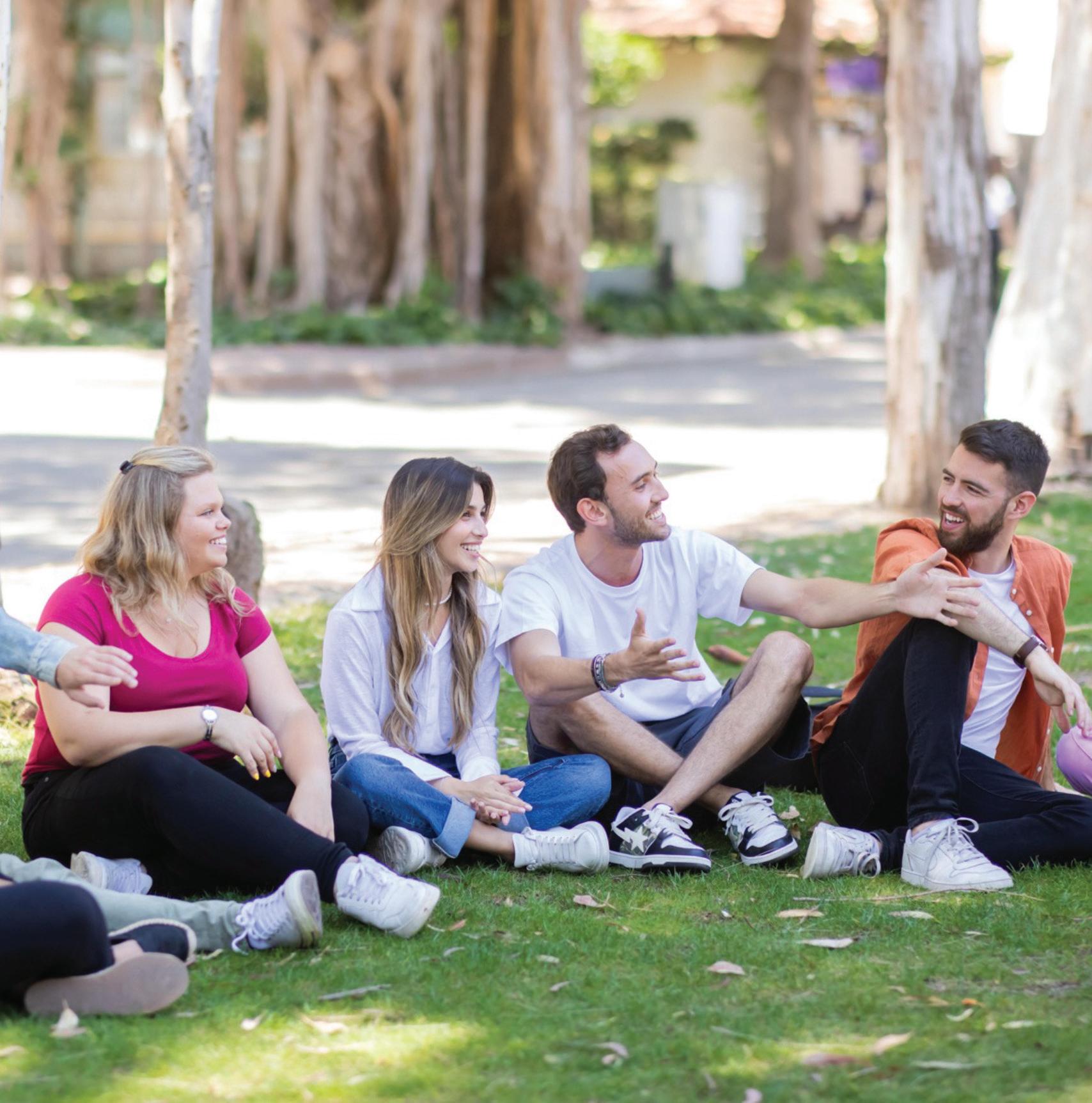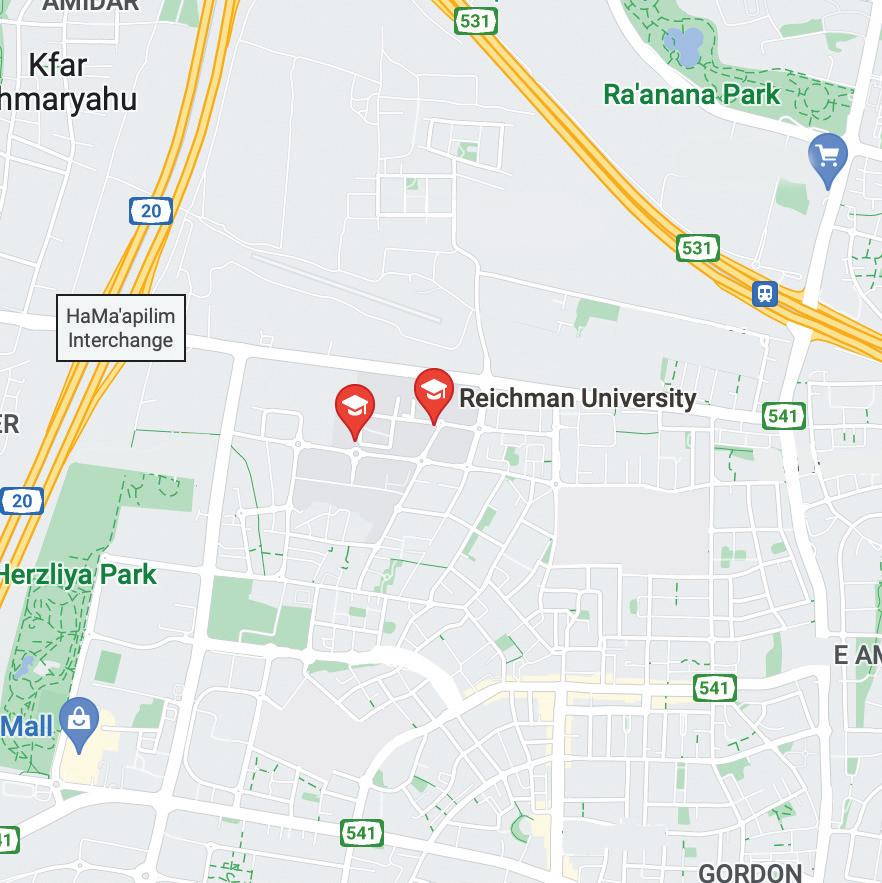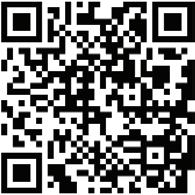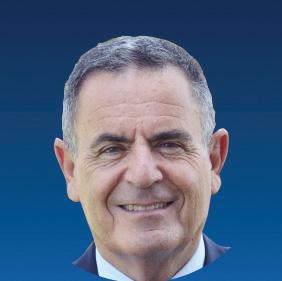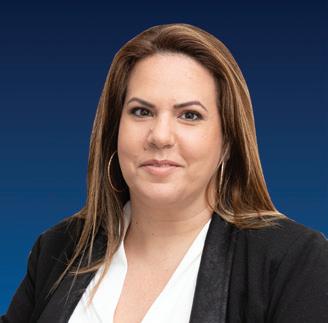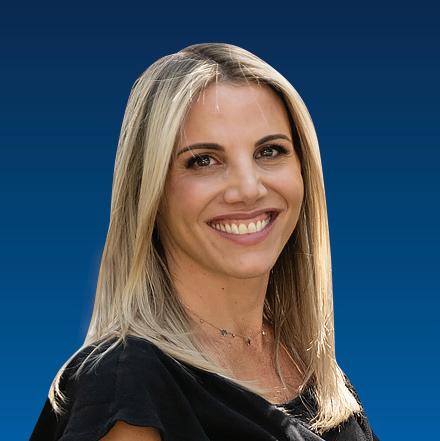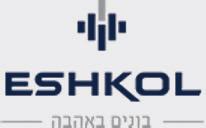










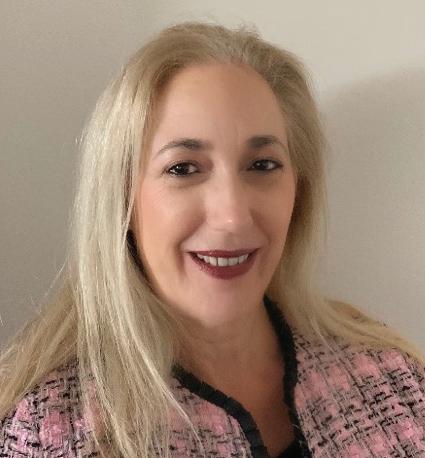
While it is common to hear expressions like “I’m living my best life”, it is easy to dismiss them as jingoism. In fact, the concept of living our best life or, more accurately, living up to our potential was a hierarchy of five needs developed by New York Jewish psychologist Abraham Maslow in 1943.
It was a theory about psychological health.
According to Maslow, the first need is physiological. We need food, water and shelter.
The second concerns safety. Consider whether you feel safe. Are you in a situation where there is abuse or coercive control, resulting in an absence of emotional wellbeing? If not you, do you know somebody who is in this distressed state? Is there something you could do to help them?
In the 1960s, there was little need for locking doors. Money was left out as an end of year gift for the postie, milkman and garbage collector. Fast forward 60 years and we not only lock our doors, but have replaced fly screens with
JUDAICA
QUIZ
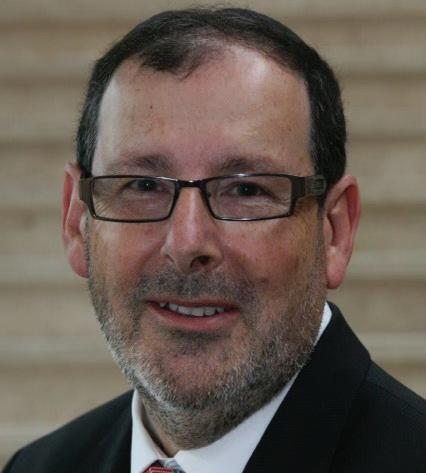
Good luck. Enjoy. Hopefully, learn something new about your Jewish heritage and tradition.
Welcome to our Shavuot-themed quiz, this is perfect timing as this joyous festival celebrating the revelation of our holy Torah given to Moses on Mount Sinai is almost upon us. This was indeed a foundational occurrence in our collective Jewish historical consciousness.
It is a happy time when we will finish counting the Omer and celebrate receiving this timeless treasured knowledge source. We appreciate your positive feedback and love how each edition Rabbi Freedman generously shares his broad Jewish knowledge across so many areas.
Enjoy this Shavuot quiz with family and friends at your Yom Tov table over a delicious kosher cheesecake.
1. Why is the festival of Shavuot known as Pentecost?
2. The Ten Commandments are found in which two Biblical books?
3. Which type of grain was harvested around the time of Shavuot
a) Barley
b) Wheat
c) Oats or
d) Rye?
4. Mt Sinai is known in Arabic as Jabal Musa. What does this mean in English?

security screens and cameras. Maslow’s third tier is love and belonging. Do the relationships we are engaged in meet our needs? Do they provide love and support? Are they fulfilling? A recent article I read indicated that 36 per cent
of employed Australians are unhappy in their workplaces.
Next up is esteem, both self-esteem and respect from others. It is important to have a sense of self-worth. Selfesteem, which involves dignity,
5. True of False – Mt Sinai is the highest mountain in the Sinai Peninsula?
6. At the summit of Mt Sinai which of the Abrahamic religions is NOT represented?
7. Emperor Justinian 1st founded St Catherine’s monastery at the foot of Mt Sinai because it was said to be the site of what event in the life of Moses?
Chukkat Hagoyim. What was the rabbi’s concern?
Good luck. Enjoy. Hopefully, learn something new about your Jewish heritage and tradition.
8. Mt Sinai is mentioned by name 10 times in the Torah (in Exodus, Leviticus, Numbers & Deuteronomy). Name the only other book of the Bible in which Mt Sinai is mentioned by name: ‘You came down on Mount Sinai; you spoke to them from heaven. You gave them regulations and laws that are just and right, and decrees and commands that are good.’
9. Who played Moses in the 1981 movie ‘History of the World Part I’?
10. Cecil B. DeMille’s last film was The Ten Commandments. It was released to cinemas in the United States on November 8, 1956. At the time of its release, what record did it hold?
11. The custom to adorn synagogues with greenery was opposed by the Vilna Gaon in the 18th century due to concerns regarding
12. The custom to eat dairy products on Shavuot (the festival which recalls the giving of the Torah) is said to be due to a Biblical reference in which the Torah is compared to milk: God says affectionately to the Jewish people, “The sweetness [of Torah] drops from your lips; like honey and milk it lies under your tongue.” From which book of the Bible is this verse taken?
13. In Sephardic communities what is sprinkled on worshippers during the reading of the Aseret Hadibrot (The Ten Commandments)?
14. Whose name appears as the very last word in the Book of Ruth and what is this person’s connection with Shavuot?
15. The Book of Ruth is set in which Biblical period?
16. Where would one find the world’s oldest continually operating library?
17. The oldest existing copy of the Ten Commandments, part of the collection of ancient texts known as the Dead Sea Scrolls, was found in Israel in which year 1947, 1949 or 1952?
competence and independence, can, of course, be eroded by others. Conversely, it can be bolstered by respect and acknowledgment of one’s achievements and strengths.
Maslow noted that the healthiest form of esteem that comes from others needs to be earned. Celebrity and fleeting recognition cannot fulfil a person’s esteem requirements long term. Social media recognition can be fleeting. We have seen how some people have been affected very negatively by this form of interaction.
According to Maslow, it is only at the fifth and final level where we may use the terms “living the dream” or “living my best life”.
Self-actualisers accept themselves, others and nature. They are not ashamed or guilty about being human, with shortcomings, imperfections, weaknesses and frailties. Nor are they critical of these aspects in other people. They respect and esteem themselves and others.
To realise our full potential we need to have daily goals of pleasure and mastery, and practice gratitude and random acts of kindness.
Anne-Marie Elias is a psychologist in clinical practice for 25 years.
18. In the Book of Ruth what reason is given for Naomi’s journey to Moab and what reason is given for her eventual return to Judah?
19. The Book of Ruth describes Ruth together with a number of other young women doing what precisely in the fields belonging to Boaz?
20. According to the Talmud (Bava Bathra 14a-14b) who wrote the Book of Ruth:
a) Moses
b) Joshua
c) Samuel
d) Jeremiah or
e) Ezra?
21. The founder of the Chasidic movement died on Shavuot in 1760. Known as the Besht or Baal Shem Tov – what was his real name?
22. When the Israelites received the Torah they were said to have exclaimed. ‘Na’aseh ve Nishma’ – what do these words mean?
23. The earliest mention of the practice of staying up the entire night of Shavuot and learning Torah appears in which book of Jewish mysticism?
24. The festival prayer book used on Shavuot and other festivals is known as a Machzor – what is meaning of this word?
25. The service known as Hazkarat Neshamot (Yizkor) is incorporated into the prayers of Shavuot (1st day in Israel & 2nd day in the Diaspora). Recalling our lost ones and saying prayers for their souls became particularly popular after which series of historical events that decimated Ashkenazi Jewry in the Middle Ages?
UIA was delighted to commemorate the milestone of Israel’s 75th anniversary by joining with more than 750 Keren HayesodUIA supporters from around the globe for a Homeland celebration.
Over 80 Australians joined groups from across the Jewish world at three pivotal events, namely Keren Hayesod’s Annual World Conference, Women’s Mifgash and Young Leadership Kesher Seminar. There were also participants from Canada, France, Argentina and a number of other South American and European countries.
More than 50 Australian supporters participated in UIA’s Yom Ha’atzmaut and Major Donors’ Missions, which gave participants access to unique experiences and speakers. That incorporated culture, history, security, innovation, creativity and cuisine, and, most importantly, seeing UIA’s lifesaving work firsthand.
Mission highlights included a Keren Hayesod-UIA Yom Ha’atzmaut picnic at Havat Ronit, together with other Missions from around the world, and unprecedented access to a Hezbollah tunnel on the northern border. There was also a visit to the Tel Nof Air Force base and access to an array of aircraft and equipment.
Participants saw and felt the impact that Keren Hayesod-UIA-supported projects are making on Israelis’ lives and society.
Visiting Kiryat Gat, Jerusalem and Ra’anana Absorption Centres, a first home for many new olim (immigrants), was eye-opening.
Participants were also moved when meeting olim from Russia, Ukraine and Ethiopia who had recently made aliyah with their support. It was
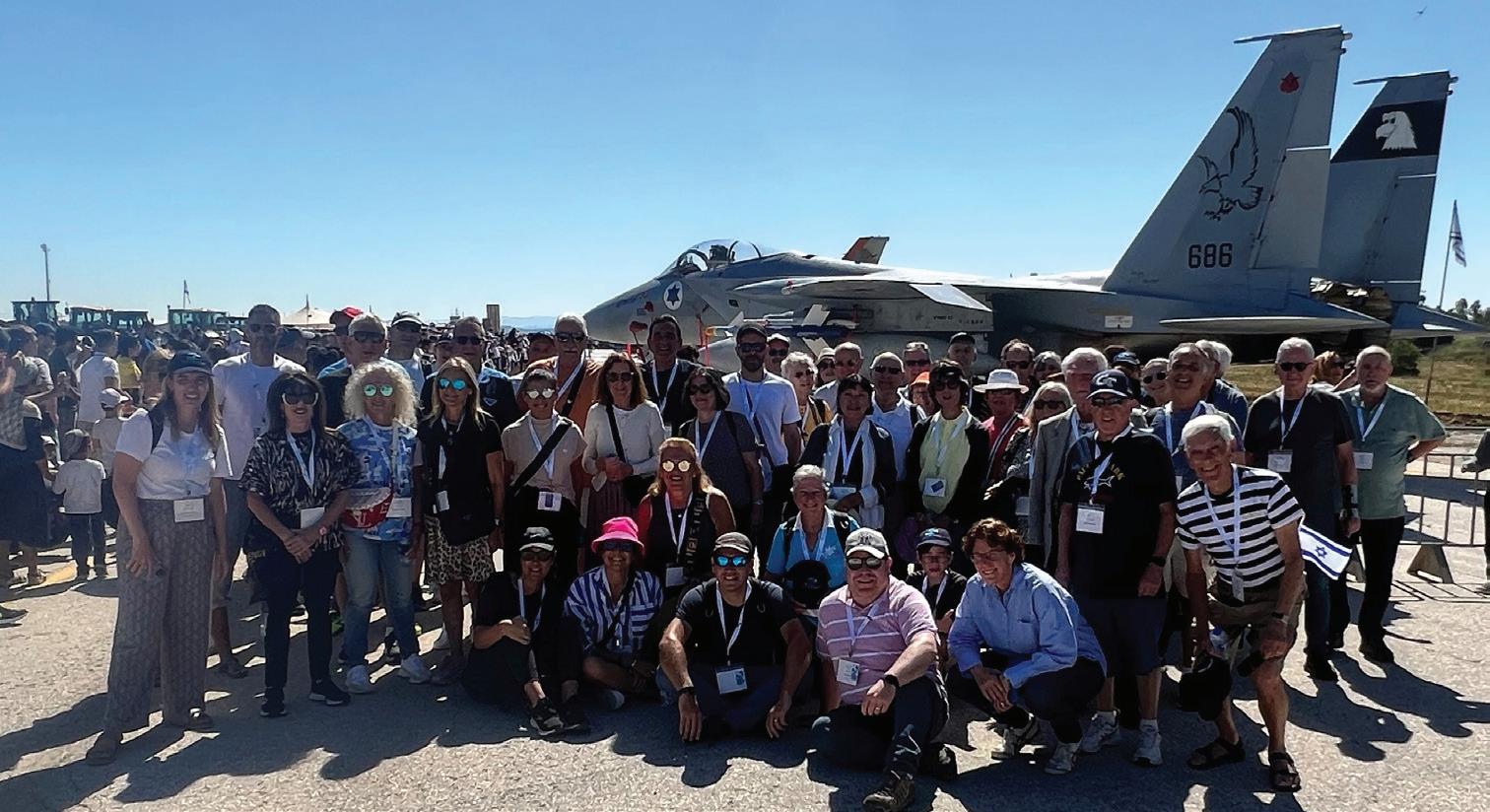
heart-warming to witness the revolutionary Youth Futures program, which helps empower over 12,000 at-risk children and their families. Additionally, participants visited the Hadassah Neurim and Ramat Hadassah Youth Villages, which help disadvantaged youth cope with integration difficulties, as well as Net@ Ramle, which provides technological training to high school students on Israel’s periphery.
Between sightseeing and taking in the tastes and textures of the Holy Land, participants heard from high-calibre speakers who gave professional and personal insights into politics, security and culture.
They included Avi Melamed, a former senior official on Arab affairs, Tal Schneider, political correspondent for the Times of Israel and human rights lawyer, Gadi Ezra. Amit Segal, chief political correspondent and commentator for Channel 12 News and Ohad
GRANTCONNECT
Designed to improve security and safety, Auditor-General Mark Dreyfus KC MP has announced the federal government will help protect faith-based places with a $40 million grants’ program.
Grants will be available for places of worship, religious schools and associated organisations to support safety upgrades.
That could include fencing, lighting, security cameras, traffic barriers, alarm systems, access controls and security guards.
The new Securing Faith-Based Places grants program – which replaces the discontinued Safer Communities Fund –promises to be an open, competitive and merit-based initiative.
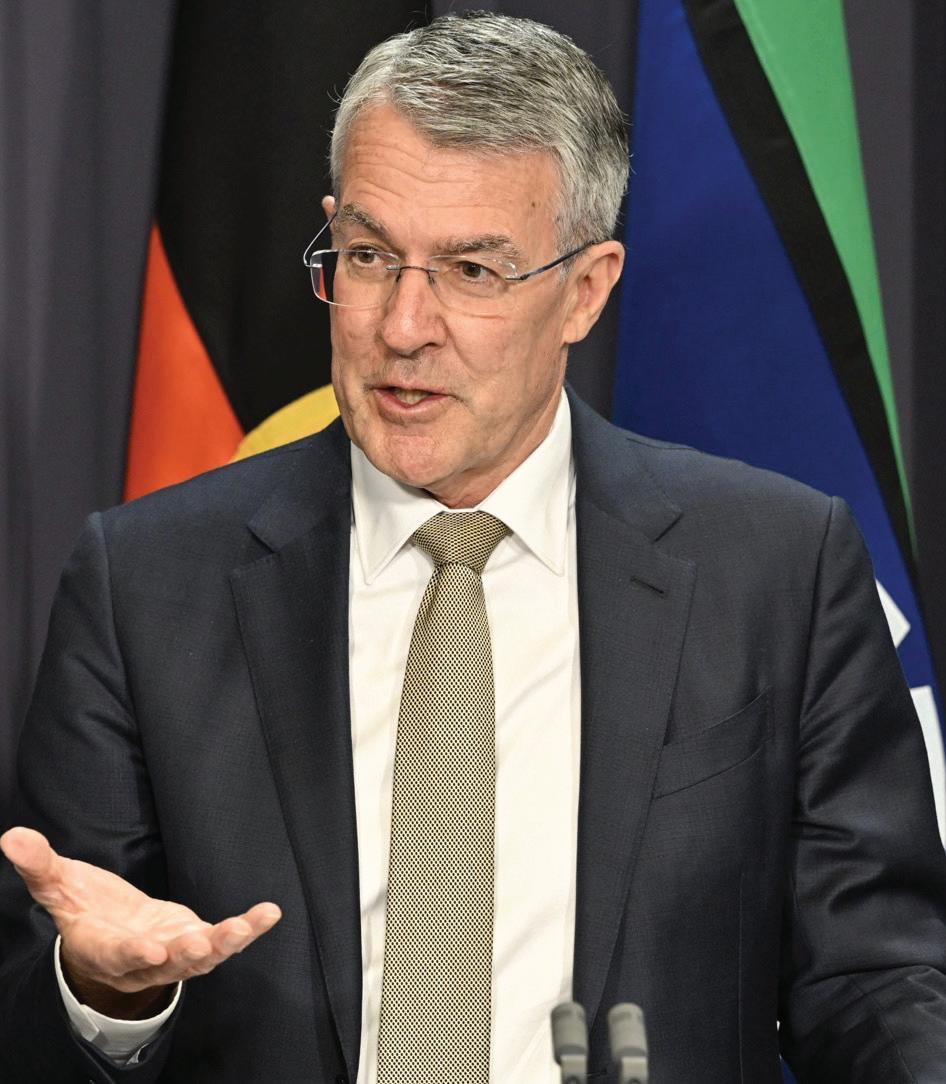
The independent Federal Member for Wentworth, Allegra Spender MP, welcomed the initiative.
She said every Australian community has the right to feel safe and practice their faith freely. Ms Spender said given the disturbing rise in antisemitism, restoring funding for community safety was particularly important for the Jewish community.
She said she had spent the past few months strongly advocating for funding to be restored.
Ms Spender said under the new program, all Jewish institutions – including schools, synagogues and museums – would be eligible for funding when grant applications open in July.
Details will be published on the government’s GrantConnect website at https://help.grants.gov.au.
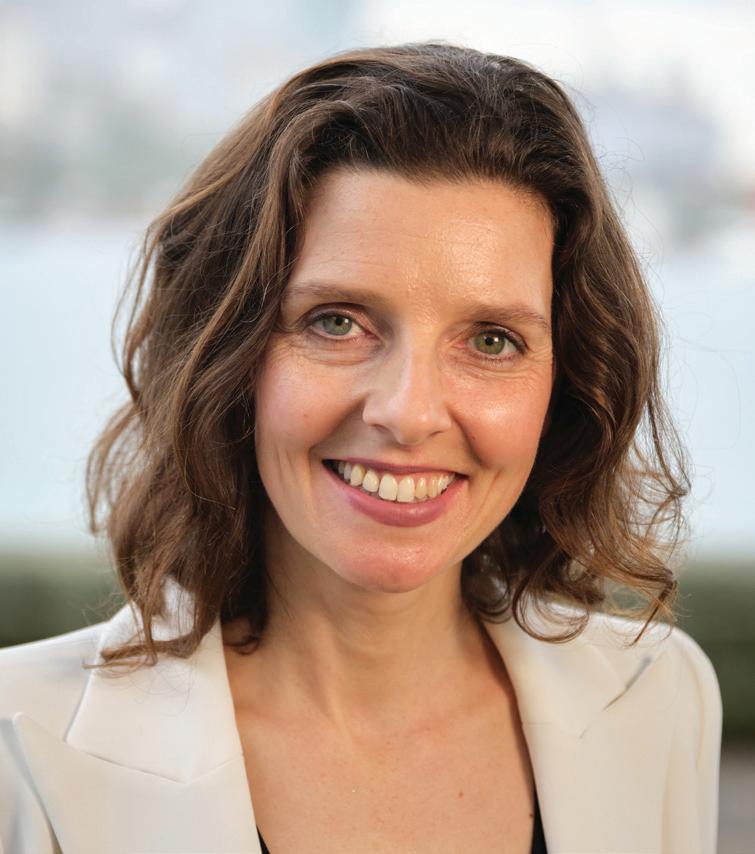
Hemo, the leading Palestinian Affairs reporter in Israel provided their expertise, while B. G. (Res.) Gal Hirsch and Col (Ret.) Kobi Marom gave overviews of Israel’s security on the northern borders.
There was also a tour of the Gaza Strip border and the city of Sderot, where the region’s population live under constant threat of rocket fire, as well as a visit to the seam line in Jerusalem with the architect of Israel’s security barrier with the West Bank, Dani Tirza.
Experiencing the National Days in Israel evoked a spectrum of emotions, from the sadness of Yom HaZikaron to immense joy at the Yom Ha’atzmaut celebrations. Participants had the chance to visit Yad Vashem and Mount Herzl, experience Kabbalat Shabbat at the Kotel, see the Tower of David’s night spectacular King David Show,
visit the new excavations at the Western Wall tunnels, enjoy authentic Druze hospitality and explore the city of Safed.
Melbourne participant Sam Parasol OAM said the Mission was a “wonderful, never-tobe forgotten experience”. The preparation by UIA personnel – from the guides and speakers, to the food and every detail was excellent. Kol Hakavod to all. I would highly recommend future Missions.”
Another Melbourne participant, Helen White, said: “Our outstanding shlichim, guides and speakers have given us great insight into the life and challenges that Israel faces. I will treasure the memories.”
Sydneysider Glynis Bass said: “Each day was filled with unbelievable adventures. We were inspired and filled with positivity and hope.”
UIA CEO Yair Miller OAM said that a UIA mission is one of the most rewarding and enriching experiences that one can have in Israel. “I am always amazed when our local Israeli madrichim tell us they have never themselves experienced many of the things we are able to provide to our participants. We are so proud of the lifesaving work we do in Israel each and every day and using these experiences to connect our donors to their Homeland and our beneficiaries is one of the unique privileges of my role.”
UIA is looking forward to its upcoming Medical Mission (10-19 October) and October Mission (12-19 October). Information about these can be found at uiaaustralia.org. au/missions, by contacting Estelle at the local UIA office on 9272-5533 or via email: info@uiavic.org
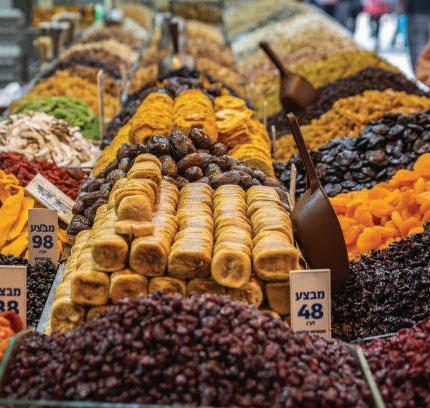
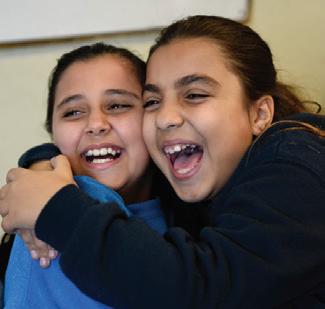
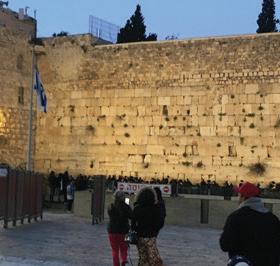
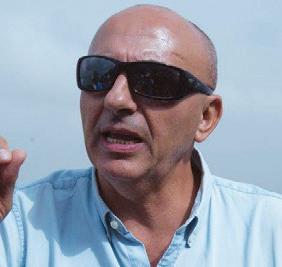
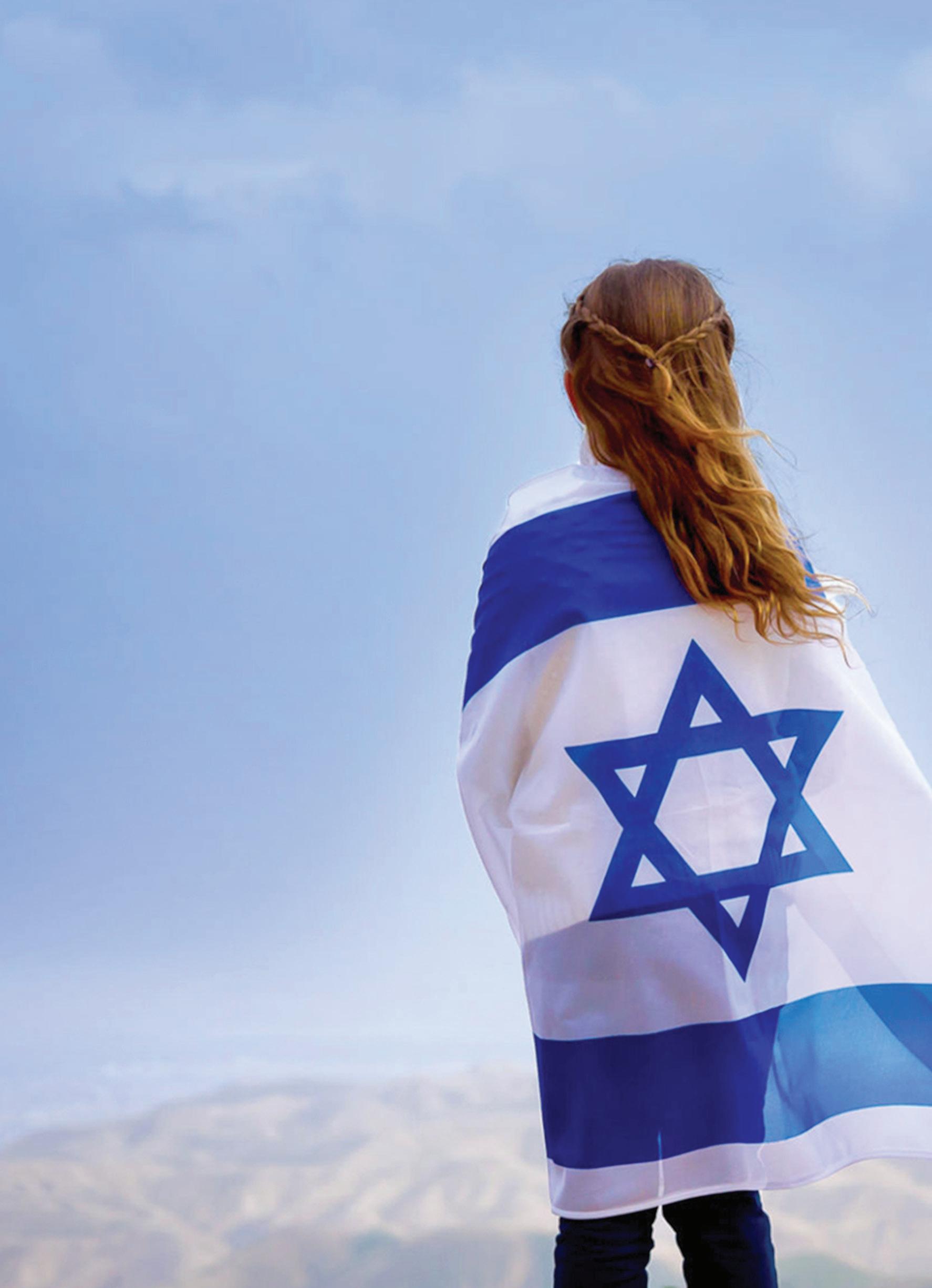
What’s up with that anointing oil?
One detail about the coronation of Kings Charles III and The Queen Consort piqued my interest. The oil that was used to anoint him as king was consecrated in Jerusalem’s Old City, two minutes away from my office, at the Church of the Holy Sepulchre.
Anointing oil? Consecration?
Crowning a king? It all sounds so, well, biblical. I was curious to delve into Jewish sources about the anointing oil used to anoint Jewish kings and explore the deeper meaning behind the oil.
The new “sacred oil” – that’s how it was referred to in the mainstream press – was created from olives harvested and grown on the Mount of Olives in Jerusalem, under the order of the Archbishop of Canterbury, Justin Welby, who officiated at the coronation.
He said, “This demonstrates the deep historic link between the Coronation, the Bible and the Holy Land. From ancient kings through to the present day, monarchs have been anointed with oil from this sacred place. As we anoint The King and The Queen Consort, I pray that they will be guided and strengthened by the Holy Spirit.”
I wouldn’t have expressed it quite that way, but the Archbishop of Canterbury was actually onto something.
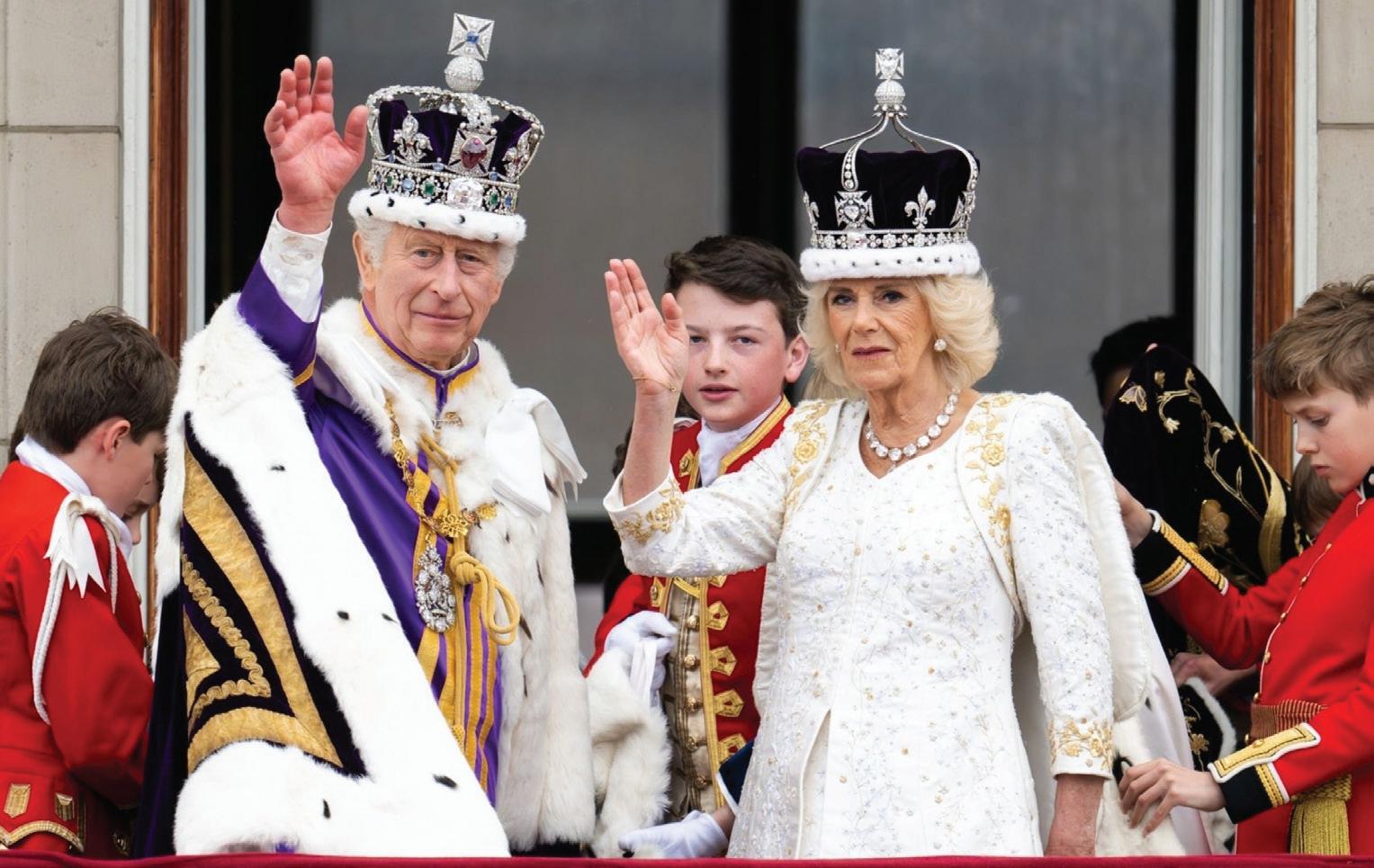
The anointing oil is referred to in the Torah (Exodus 30:22-33) when God instructs Moses to produce it to consecrate kings and High Priests, as well as the Tabernacle and its utensils (such as the ark, altars and menorah). That’s a lot of anointing! But the Talmud states that the original oil Moses produced in the desert, though only 12 logs (around 4 litres), miraculously lasted for all of Israel’s history and exists in its full quantity today (Horiyot 11b).
No, King Charles can’t get his hands on some of it. The oil was hidden away by King Josiah towards the end of the First Temple era – when he hid the Ark of the Covenant and some other sacred

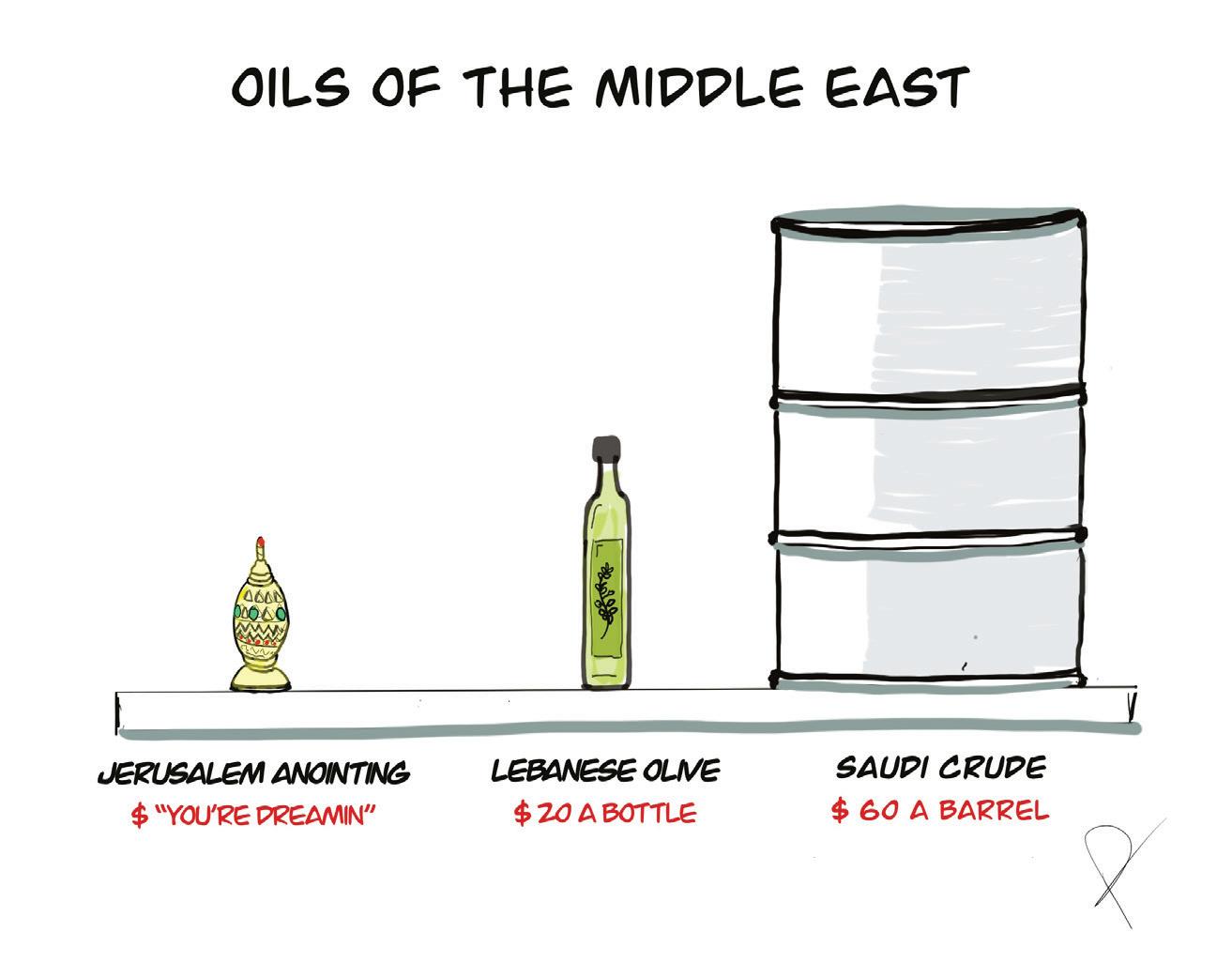
Melbourne Jewish Report Disclaimer:
Except where expressly stated otherwise, content in The Melbourne Jewish Report is provided as general informations only. The articles in this paper have been contributed by a third party. The opinions, facts and any media content here are presented solely by the author, and The Jewish Report assumes no responsibility for them. It is not intended as advice and must not be relied upon as such. You should make your own inquiries and take independent advice tailored to your specific circumstances prior to making any decisions. We do not make any representation or warranty that any material in the papers will be reliable, accurate or complete, nor do we accept any responsibility arising in any way from errors or omissions. We will not be liable for loss resulting from any action or decision by you in reliance on the material in the papers. By reading the papers, you acknowledge that we are not responsible for, and accept no liability in relation to, any reader’s use of, access to or conduct in connection with the papers in any circumstance. Photographs submitted by individuals or organisations are assumed to be their property and are therefore not otherwise credited. All articles in this paper have received the expressed consent of the author to publish in this paper.
The Jewish Report; ISSN 2204-4639
Publisher: The Jewish Report Pty Ltd (ACN 167302981)
Distributor: TJR Distribution Pty Ltd ACN 165158029
Comments or suggestions to: editor@thejewishreport.com.au
Article submissions to: www.thejewishreport.com.au/article-submission-guidelines
Advertising: editor@thejewishreport.com.au
Website: www.thejewishreport.com.au
Printer: Spotpress Pty Ltd
menorah in the Temple, represents the light of Jewish wisdom that illuminates the world. Accessing the pure oil requires squeezing the olive, symbolising the necessity to put in maximum effort to attain wisdom.
The Talmud (Yoma 72b) states that the crown of Torah is available for anyone who wants to take it. It doesn't matter what your IQ is; if your yearning for Jewish wisdom is so strong that in translates into blood, sweat and tears, God will open up the gates of wisdom and crown you with the Crown of Torah. Accessing the wealth of Jewish wisdom is totally yours for the taking if you want it badly enough.
Perhaps that is why Moses’ oil will never be depleted. The oil represents the infinite Torah that is available always, to everyone, for all time.
items, knowing that the Temple was soon to be destroyed.
When the Temple is rebuilt, the oil will be revealed from its hiding place – together with the Ark – and the future King of Israel (aka the Messiah, Mashiach in Hebrew, which means “the anointed one”) will be anointed with it. Why were Jewish kings anointed with oil specifically? And what’s the significance of the miracle of Moses’s oil lasting forever? (Seems like a far bigger miracle than the flask of oil burning for eight days!)
In Judaism, anointing with oil signifies the endowment of divine power, authority, and blessings upon the new king. Oil, which was also used to light the
But there’s one more catch. You can only attain it through humility. In the verse, "Where shall wisdom be found" (Job 28:12), the Hebrew word for "where" is "me’ayin" which also means "from nothingness". The Talmud (Sotah, 21b) says that Torah wisdom can only be found in one who "makes nothing" of himself. That is why a king was commanded to write his own Torah scroll and carry it at all times next to his heart, reminding himself that he is not above God.
May the lessons of the anointing oil rub off on King Charles, and may God bless him with clarity and wisdom in these confusing times.
How many common words of 5 or more letters can you spell using the letters in the hive? Every answer must use the centre letter at least once. Letters may be reused in a word. At least one Jewish word will use all 7 letters.
Proper names and hyphenated words are not allowed. Score 1 point for each answer and 3 points for a Jewish word that uses all 7 letters.
Rating: 20 = Good, 24 = Excellent and 27 = Genius
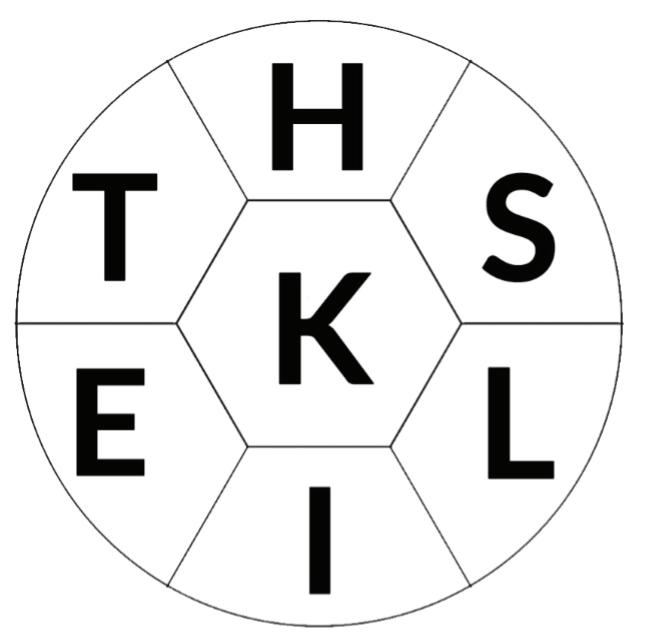
Yoni Glatt has published more than 1,000 crossword puzzles worldwide, from the LA Times and Boston Globe to The Jerusalem Post. He has also published two Jewish puzzle books: "Kosher Crosswords" and the sequel "More Kosher Crosswords and Word Games".
Every Anzac Day, a large Australian flag is draped over the choir loft that sits above the ark at St Kilda Shule. On Yom Hazikaron (Remembrance Day for Israel's fallen soldiers), we do the same with the Israeli flag. This year, for the first time in decades, both these sacred days coincided and both flags proudly hung side by side. This confluence was not lost on Australian Jews, one of the most proudly Zionist communities in the world.
And while Anzac Day and Yom Hazikaron are distinctively different, each commemorated independently, there is an obvious and powerful connection between them. Both are days of deep reflection, somber remembrance and heartfelt gratitude for the men and women who sacrificed their lives to protect freedom and democracy. And both segue into celebration when these freedoms are realised within our lived experience.
Indeed, in Israel and beyond, one of the most emotionally challenging human experiences is transitioning from the profound solemnity of Yom Hazikaron to the unbridled joy of Yom Ha'atzmaut (Israel's Independence Day), which celebrates the freedoms of a selfgoverned, sovereign state. Having had the opportunity to lead a UIA Mission to Israel on these special days, I can attest

to the emotional roller-coaster that comes with it.
It was there that I met Israel's former Ashkenazi Chief Rabbi of Israel Meir Lau, the youngest survivor of the Buchenwald concentration camp. I told him that my grandfather, Mendel Glick (founder of Glicks Bakery), was also a survivor of Buchenwald. We spoke about the miracle that was Israel's establishment in the wake of the Holocaust and the enormous sacrifices made by the men and women of the IDF to ensure the freedoms Israel enjoys today. That conversation brought to life the very real and palpable dichotomy of sorrow and joy felt by Jews around the world during the 48 hours of Yom Hazikaron
and Yom Ha'atzmaut. And this year in Australia, I couldn't help but think of the parallel to Anzac Day. Waking up at 5am, I attended and spoke at a deeply moving and emotionally stirring dawn service honouring the Anzacs. Then, only hours later, I went to the Collingwood versus Essendon AFL match at the MCG. I felt the transition from the solemnity of sacrifice to the joy of freedom. Indeed, even at the game itself, this dichotomy was so powerfully illustrated when 95,179 people (a record Anzac Day attendance) stood in silence and pensive reflection to pay tribute to our gallant fallen. Then followed a euphoric roar ahead of the first bounce of the ball.
The fellow sitting next to me asked
me how I felt about a football match being played on such a solemn day. I responded that this is exactly what the Anzacs fought for. As long as the first half of the day is experienced with the dignity and reverence it deserves, we should then celebrate the very freedoms for which our forebears sacrificed so much. Here, too, the transition from sadness to joy, from reflection to elation, comes to life in what has become a highly regarded, annual tradition.
Later that same day, I attended the Yom Ha’atzmaut communal prayer service at the Mizrachi Shule and, again, my emotions went into overdrive. In the presence of a packed synagogue, we sang stirring songs of remembrance for the fallen soldiers of Israel as the sun set on the final moments of Yom Hazikaron. Then came jubilation, with the onset of Yom Ha’atzmaut. I had the sacred task of blowing the Shofar, followed by the loud and proud proclamation of “Leshana Haba’ah Be’Yerushalayim” – “Next Year in Jerusalem!” We then danced and celebrated the modern-day miracle of Israel and the freedoms she enjoys.
Rarely have so many conflicting emotions been so prominent to so many Jewish Australians within the span of just 24 hours. It served as a reminder of the vulnerability of the human condition and of the deep connection we feel to Israel and Australia. May the memory of those who sacrificed for our freedoms serve as an eternal blessing.
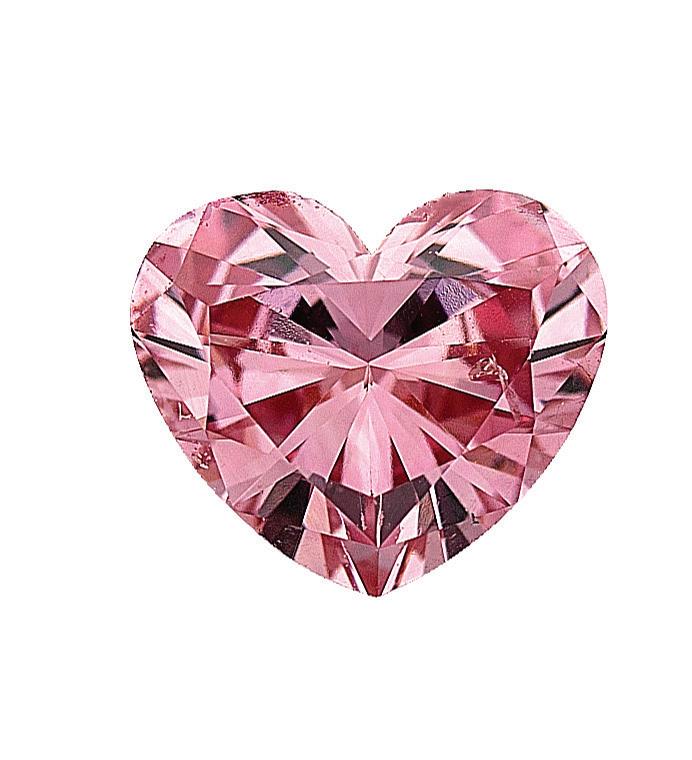

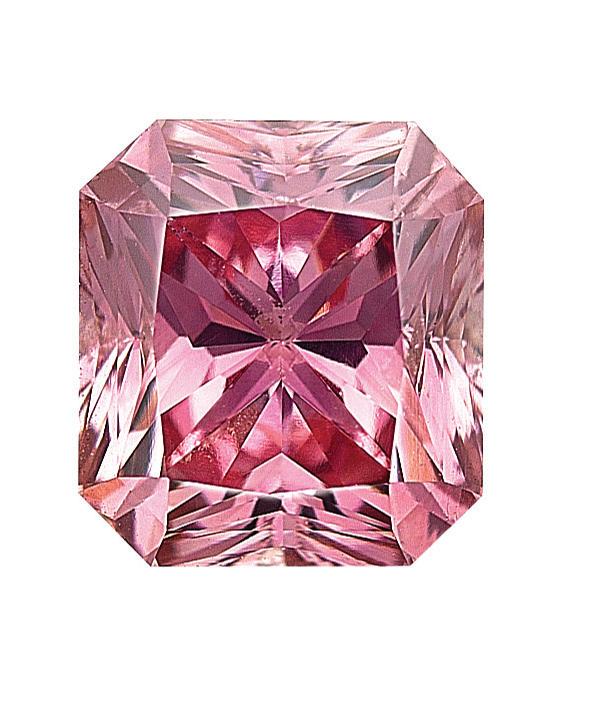
ARGYLE PINKS DIAMONDS as well as other COLOURED DIAMONDS are available at Ian Sharp Jewellery. Start your Pink journey with us today. There is nothing on earth quite like an Argyle Pink Diamond. The returns on pinks have outpaced the stock market and the Argyle mine has ceased production as of the end of 2020. With no more new supply, now is the time to get your rare Pink Diamond.
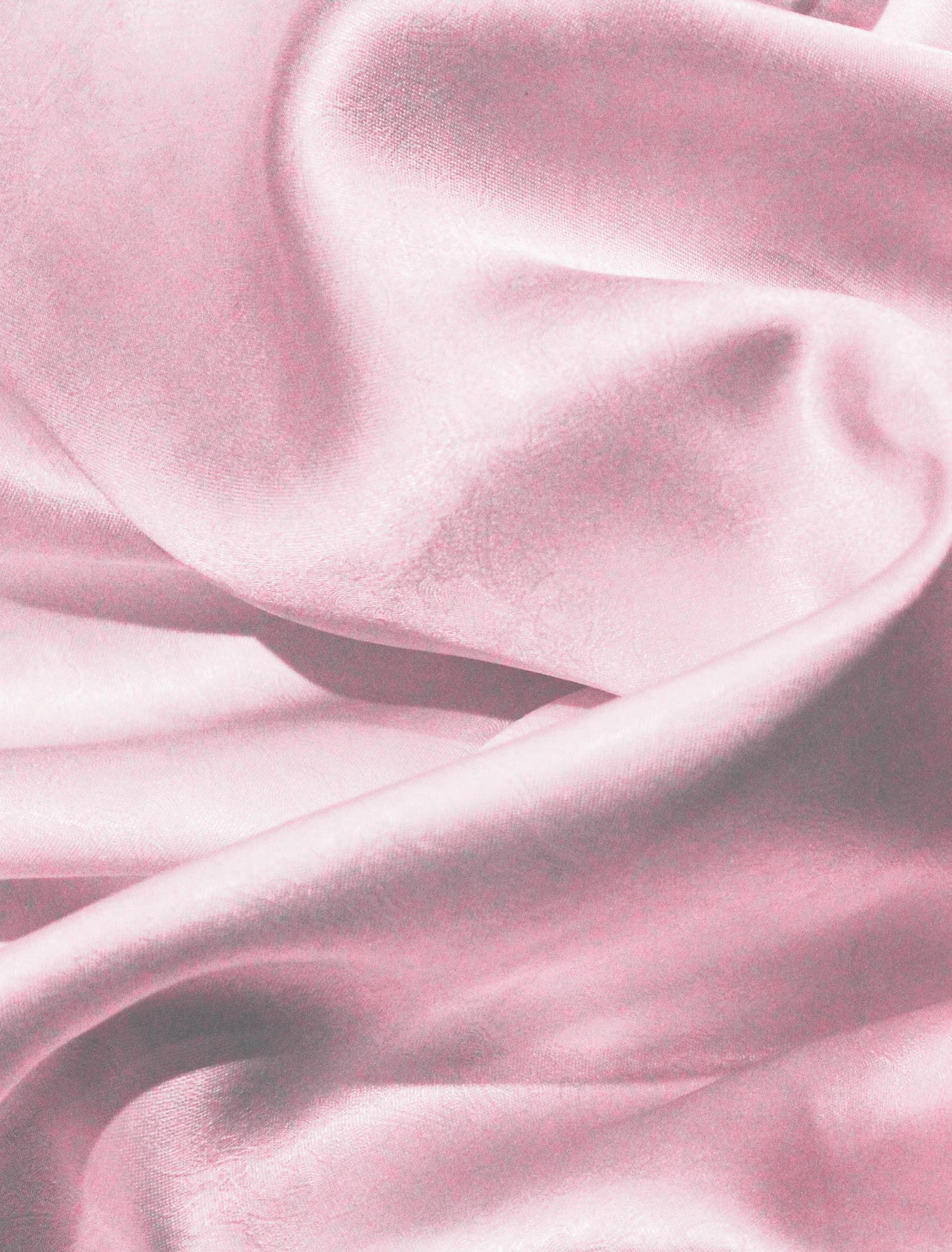
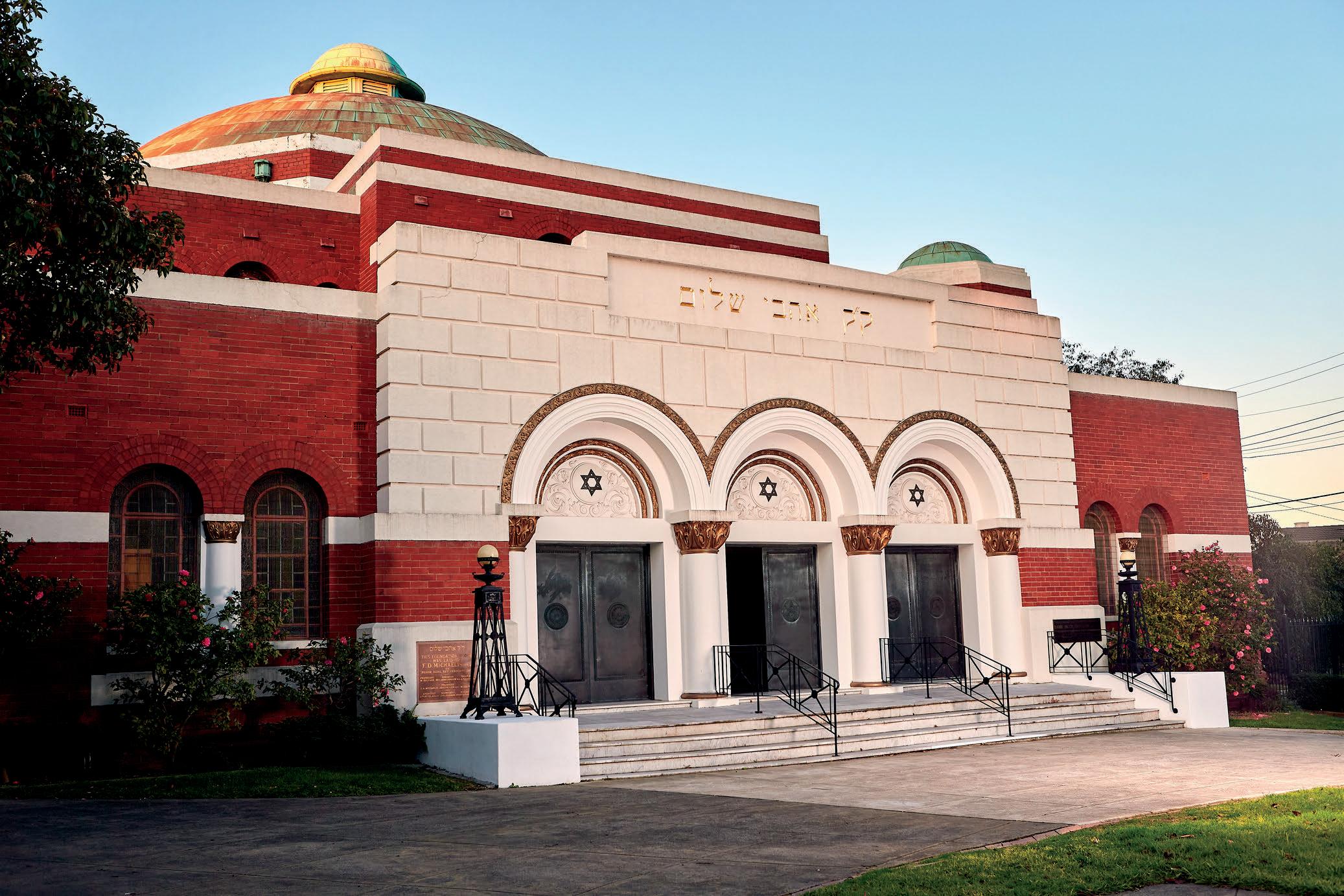

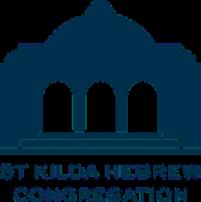
Visiting every country on Earth is a rare feat, with NomadMania, a not-forprofit organisation that certifies people who travel to every country on Earth, estimating that fewer than 300 people have done so, about half as many as have been to space. Now Melburnian Daniel Herszberg has been added to that list. Currently ranked the 145th most travelled person in the world by NomadMania, he is just the fourth Australian to visit every country (193 countries officially recognised by the UN, plus the Vatican, Palestine, Kosovo and Taiwan, for a total of 197), and he did it by age 30.
While travelling, Herszberg has seen some amazing sites including the lava lakes of the Congo, the great dunes of the Sahara Desert, and Lake Baikal in Siberia. His journeys have also taken him to active war zones in Syria, Yemen and Somalia. However, Herszberg, who was raised in an Orthodox family, has a specific interest that differs from other world travellers: Jewish history. In each location he goes, Herszberg actively seeks to document anything Jewish that he can find.
“There are two sides to the Jewish story of the world,” he said. “The living side, where communities still exist and are flourishing, and the other side, where you see the world that was lost – centres of former Jewish civilisations in countries we left behind.”
In 2016, Herszberg drove outside the glitzy, oil-rich city of Baku, Azerbaijan, where the landscape is dotted with red mountains and minarets, passing through mountains and crossing a river, until he arrived in Qırmızı Q s b , a quintessential Jewish city. The synagogues are located off the main road and little children play on the streets wearing kippahs. The local Jews speak their own ancient language, Judeo-Tat. The people of Qırmızı Q s b – nicknamed “the last surviving shtetl on earth” – are residents of one of the only Jewish-only towns outside Israel and the United States. The town was largely protected from persecution during the Holocaust after the Nazi invasion of the Soviet Union, and despite rising emigration, its roughly 3,800 Jewish residents retain a strong presence and tradition.
When Herszberg posted photos on his Instagram account @dhersz, followers were fascinated, with many commenting that they were unaware that there was a thriving Jewish community living in Azerbaijan.
Herszberg’s content resonates with many, but especially with Jews whose families have historic connections to the places he visits and have not been able to go back and visit.
“I’ve had people whose families used to be connected to some of these abandoned synagogues and they reached out to me on Instagram to tell me they saw the photos and they showed them to their grandparents,” he said. “I’ve been in touch with descendants of people who have described emotions of comfort or closure, knowing what has happened to their childhood school, home or synagogue.”
The travel bug bit Herszberg early. His mother is South African and his first overseas trip at age 2 was a visit to his great grandmother in Canada. As
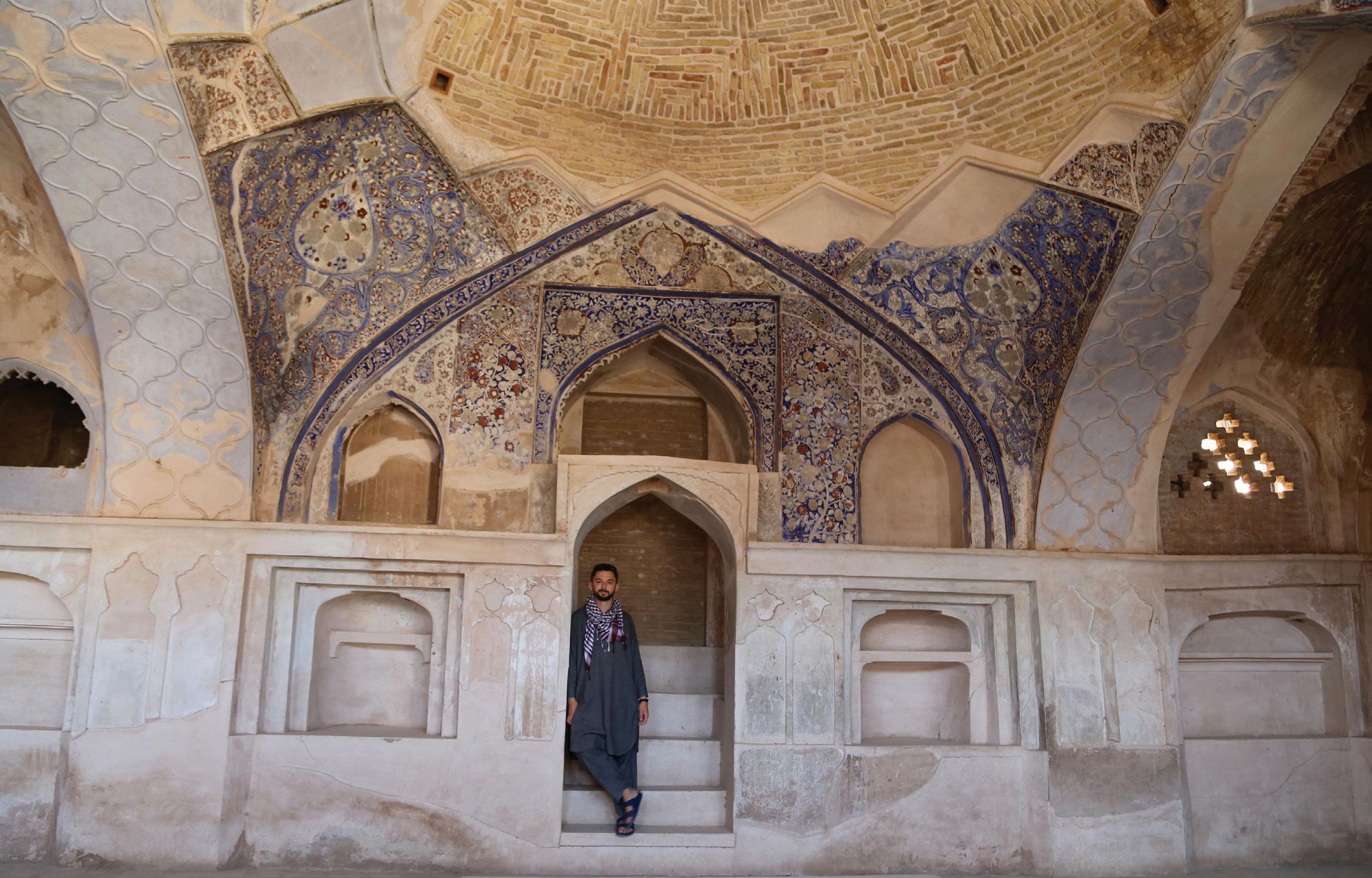
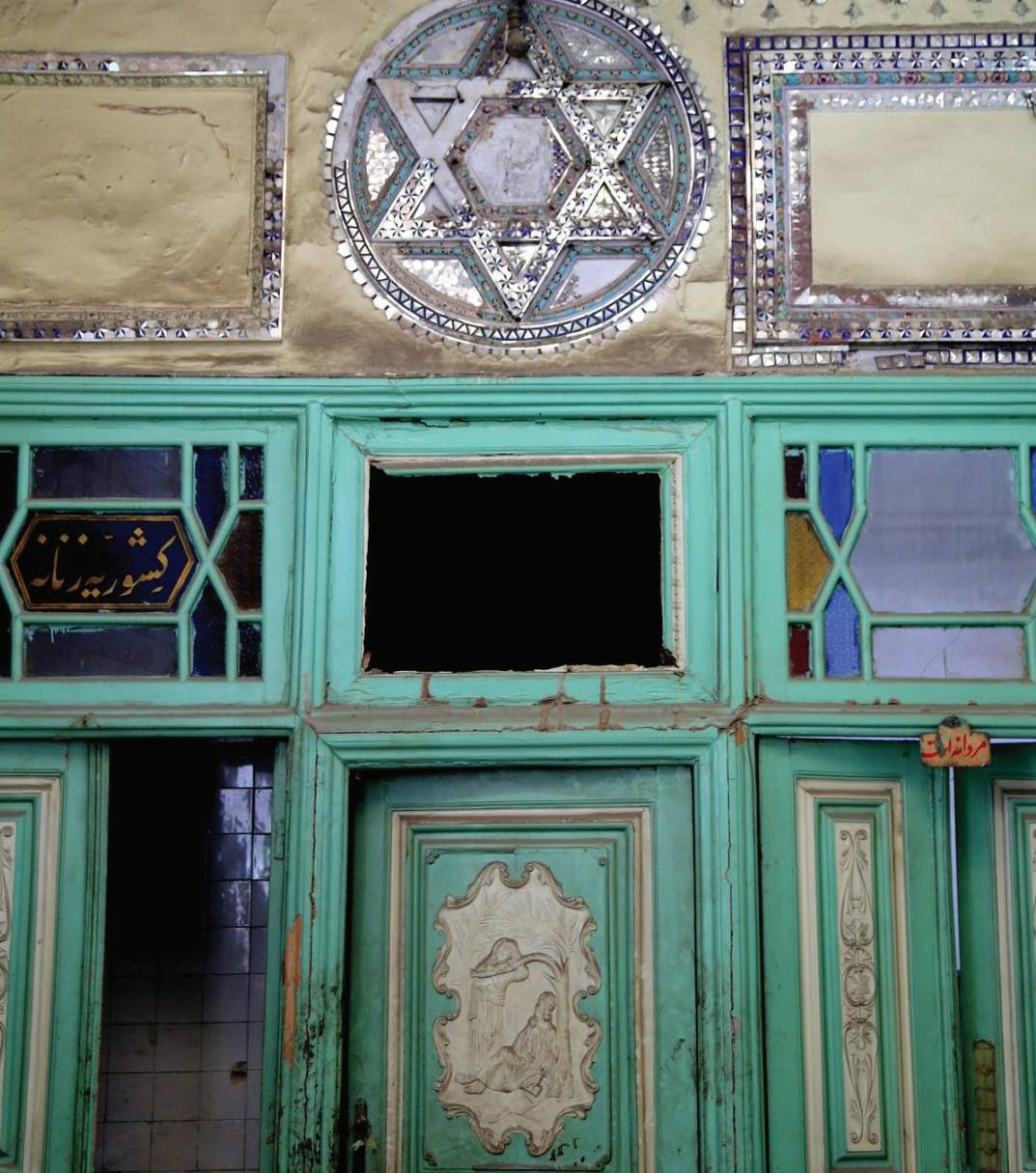
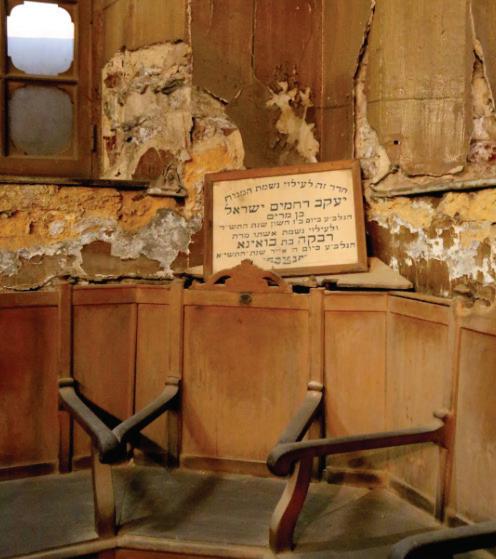
such as Egypt and Iraq, left in a haste. When the Jews left, the caretaker moved onto the site and received the keys. They are the last ones standing,” said Herszberg. “They often have a real nostalgia for this lost world.”
These caretakers, now in their 80s and 90s, often remember the vibrant Jewish communities that lived in these places.
a child, he also visited Israel and the United States, and went on a few family holidays to Thailand and Singapore.
When he turned 18, Herszberg knew he wanted to travel the world. While studying liberal arts and law at university in Melbourne he visited 140 countries, paying for his travels through parttime jobs, including tutoring, teaching swimming and running the children’s service at his local synagogue. “I would work all semester and then travel in my breaks,” he said.
He is fluent in six languages, including Hebrew, English, Spanish, French, Portuguese and Mandarin, as well as conversational in Levantine Arabic, Indonesian and basic Yiddish.
When Herszberg finished university in 2016, he accepted a corporate job at Skadden, Arps in Hong Kong. After working as a lawyer for three years, he had saved enough to fund his travel to the remaining countries on his list.
In 2019, he quit his job, armed with a plan to finish visiting all the remaining countries over the next 12 months. The pandemic intervened and stretched out his plans a little longer … until March 2023, when he reached his final country,
Tonga, whose borders were shut for the duration of the pandemic.
As the grandson of Holocaust survivors, Herszberg is especially appreciative of his Australian passport, which allowed him to visit every country on earth.
“I share a lot of my journey online and at times it’s been quite difficult,” he said. “I always wanted to share Jewish stories, but for the first 180 countries I visited I kept my Jewishness quiet as I was scared of being refused a visa or (of potential) trouble at immigration. As the risk decreased that I would be refused a visa, I started sharing Jewish stories more openly.”
A look at his Instagram page shows content dedicated to the Jews of Iraq, Iran and Lebanon. The pictures he shares are poignant and give a sense of the rich Jewish communities that used to live in these places.
Herszberg also documents the synagogues he visits in hard-to-reach countries and is especially grateful to all the non-Jewish caretakers who helped him to access the sites.
“The story of these caretakers is often very similar. Their families were the caretakers of these buildings for many generations. The Jews in many countries,
“In Cairo, a caretaker took me to a synagogue and he still knew how to chant the Jewish prayers in the tunes the community used to sing, more than 70 years after the Jews left. He knew where everyone lived. He pointed to houses on the street and told me: This hakham [rabbi] lived there; this family used to live here. These properties belonged to this family; the kosher butcher stood here. In the backstreets of Cairo, the stories of this caretaker brought an exiled Jewish community back to life.”
In addition to the kindness of the caretakers that have allowed him to document the history of so many important historic Jewish sites, Herszberg is grateful to the global Jewish community that has hosted him in many unexpected places, including Iran, Ethiopia and Uzbekistan.
“The Jewish people have historically been scattered and defined by dispersion,” he said. “But the more I travelled and the more people and stories I got to know, the more I experienced how our scattered communities are connected. From Shabbat dinners in Tehran to the Amazon, we would play Jewish geography and almost always identify a mutual friend or community member, tying together our Jewish communities over Friday night dinner. No matter where we are located, Jews share common understandings of our heritage and identity.”
This story originally appeared in Tablet Magazine (tabletmag.com) and is reprinted with permission.

 Yogev Aharon, manager of Kosher Kingdom, which is supervised by Kosher Australia
Yogev Aharon, manager of Kosher Kingdom, which is supervised by Kosher Australia
By now, most people will have heard supermarkets and retailers blame the supply chain for empty shelves and stock outages.
But exactly what is the supply chain and how does it affect kosher products?
Decades ago, when a company manufactured a product, it most likely made almost all the ingredients from scratch itself. For instance, a baker would buy in the basic ingredients, such as flour, yeast, salt, spices, oil and eggs.
With efficiencies due to Just in Time (JIT) processing, reduced stock holdings and improved scheduling, many

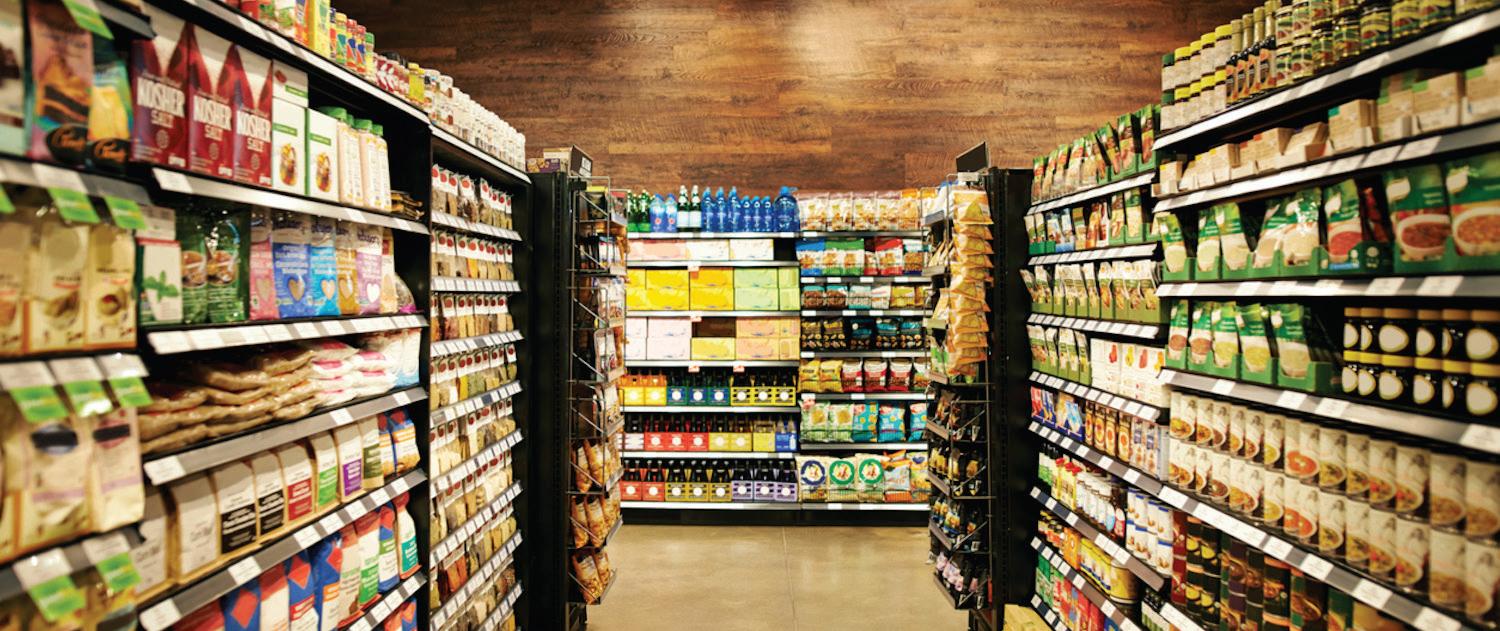
manufacturers now buy in partially processed ingredients. That means they no longer need as many staff or hold as much inventory.
They can also produce faster and thereby are more responsive to customer demand. In the case of the baker, he now purchases a bread mix with all ingredients added, only requiring a final proving before baking.
From a kosher perspective, if a manufacturer wants to make its products kosher, it has to ensure that the ingredients used are also kosher.
If the intermediate products are not kosher, then getting an end product
or find that sourcing kosher ingredients is sometimes not economical. Just because the product was kosher in 2019 doesn’t mean it is kosher in 2023.
kosher is almost impossible. Over the years, Kosher Australia (KA) has focused on the manufacturers of ingredients – flavours, pre-mixes and seasoning –which are lower in the supply chain, to get them kosher.
This enables companies at the higher end of the supply chain to achieve kosher more easily.
For example, more than a decade ago, KA was asked to assess a range of health food bars sold nationally. Of all the ingredients in the range, half required kosher certification.
Consequently, the project was cancelled. Years on, revisiting the project
from the perspective of getting the supply chain kosher, of the 40 ingredients requiring certification, 37 are now kosher. The supply chain challenges facing consumers highlights the importance of locally manufactured kosher products and the responsibility that rests with Kosher Australia, which certifies more than 85 per cent of Australian kosher products.
The average Australian supermarket stocks about 2,000 mainstream kosher products, many staples for kosher households, which enable the community to maintain kosher despite the supply chain problems.
While I can be quite annoying at the best of times, once I started working for Kosher Australia, I stepped that up a notch. My friends now refer to me as the “kosher cop”, as whenever I go out visiting, I can’t help but look in their kitchen pantry and point out things that really shouldn’t be there. (Most of my mates take it with good humour – at least the remaining ones do.)
How does it happen that people who are strictly kosher end up with products in their cupboard that aren’t kosher?
There are a few reasons for this happening:
Unclear information
The kosher food guide and app are ambiguous. Kosher Australia (KA) makes every effort to make things clear, but sometimes it is just not possible. For instance, when only certain batch codes or best before dates are acceptable (such as SPC products) or when we mess up.
Differing standards
On occasion, there are differences between what is listed in the KA Food Guide and statements made by other kosher agencies. Given the due diligence KA puts into what it lists from both the food technology and halachic perspectives, it would like to think that it is correct. Each product approved by Kosher Australia goes through three levels of checking to ensure its approval or otherwise. If KA is not sure about a product, it is not listed as kosher.
Deleted Products
Products come off the kosher list for various reasons – manufacturers change the way they do things, make an error,
The shopkeeper
In some stores, the shopkeeper tries to take on the role of the kosher authority, advising consumers what is and what is not kosher. KA always advises consumers not to rely on the assurances from the shopkeeper, who may not be objective.
The manufacturer
Sometimes, manufacturers claim that a product is kosher. Their website may feature a kosher symbol. When a manufacturer makes such a claim, ask for a copy of its current kosher certificate, which is supporting documentation for its claim.
The rumour mill
People say that they heard that KA had approved “the product”. I remember growing up when someone said that a certain popular local brand of ice cream was kosher. We all bought it until the rumour was disproven.
Rule of thumb – if a product is okay, we’ll send out a note or list it in the app or food guide. If there is no advice, then there is no change.
Saw it in the cupboard
Of course, “the mother of all reasons” is that “we saw it at so-and-so’s” place and “they are extremely strict” – the so-called “but everyone eats it” excuse.
For any, and all, of the above reasons, consumers erroneously purchase nonkosher products.
So, as always, please check the current KA Food Guide or free kosher app first. You may discover something you didn’t know.
A lot has happened in the past 12 months, so here is a quick rundown on how Kosher Australia (KA) has tried to make the lives of kosher consumers easier.
Barcode reader on the Kosher App
Last December KA added a barcode reader to the kosher app that can scan the barcode on a product or the shelf label in Coles or Woolworths and lets you know if the product is kosher.
Kosher self-serve coffee
Coles Elsternwick and Ripponlea Grocer now have self-serve kosher coffee available.
New restaurants
Nogga has opened a meat restaurant (next door to the Ripponlea Grocer). The Chicken Specialist opened on the corner of Orrong and Alma Road. Kaduri is located a few doors down from Klein’s Gourmet on Glen Eira Road and Pizza O’Clock is now under KA supervision.
All Things Equal on Carlisle Street has become kosher and the café at Jewish Care in Windsor offers a kosher oasis on St Kilda Road.
Local Pesach products
With the ongoing supply chain chaos, KA uncovered local supplies of Pesach-suitable ingredients, making the Yom Tov more affordable to all.
Education
Working with Jewish day schools on kosher education and developing a program for training apprentice kosher supervisors.
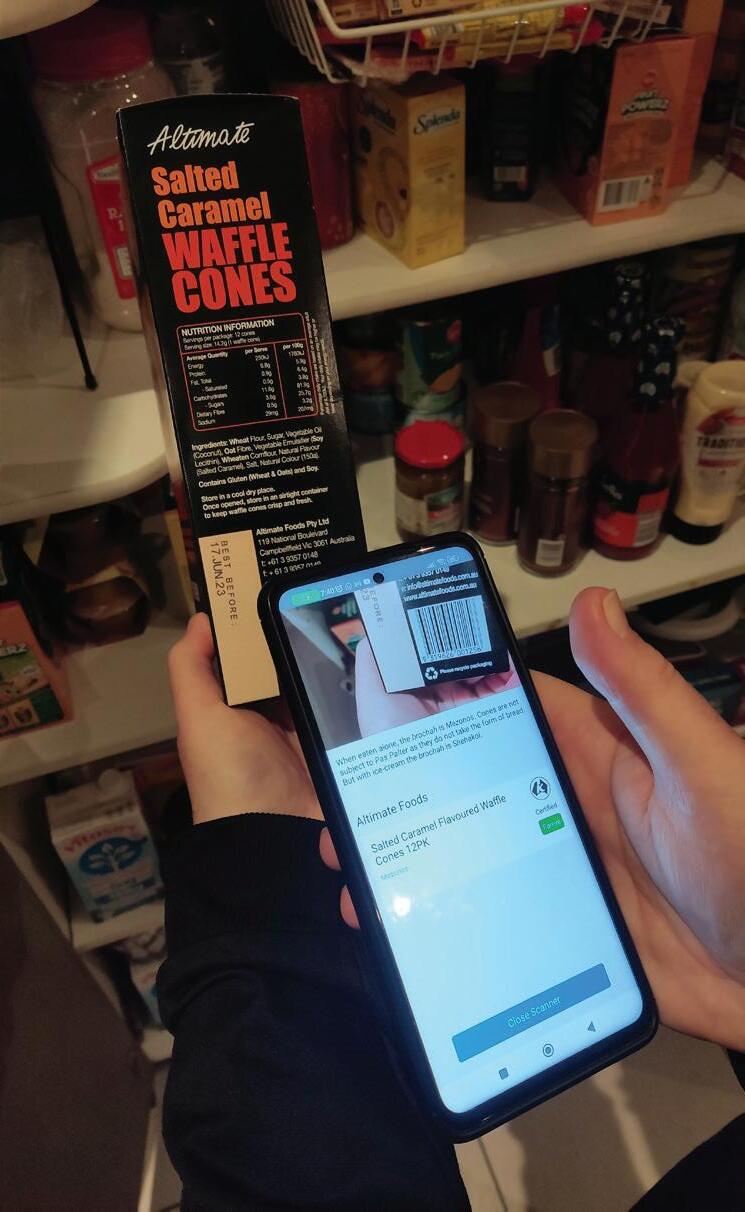
A weekly Q & A on kosher food-related issues, from kosherising equipment to the ins and outs of checking figs for infestation, appearing on our social media platforms.
And behind the scenes, 3,798 changes in Kosher products, 7,956 spot check of restaurants under KA supervision to ensure compliance and 756 factory audits in Australia, New Zealand, Fiji, Taiwan, Thailand, Vietnam, Indonesia, Malaysia, Japan, Singapore, Norway, Denmark, Italy and Tasmania.
To ensure that products are kosher, several things need to be checked. They include the basic ingredients, the method of preparation and the cleaning of equipment between products that are made. Then Kosher Australia (KA) enters into an agreement that no production process or ingredients are altered without advance notice to KA.
A common misconception is that kosher production requires a rabbinic supervisor to be present at all times. While the presence of a supervisor is certainly an advantage, modern production methods may allow kosher certification to take place as long as the production complies with rigid (and enforced) work instructions and defined recipes for making products.
A typical facility may only require an annual, major certification audit, with additional surveillance audits (as determined once the certification audit has been conducted).
There are exceptions to this, namely:
• Meat preparation – supervision is required at all stages;
• Cheese production – where rennet is used in the cheese product (even if the rennet is microbial or vegetarian) a rabbinic supervisor or Orthodox Jew must dose the rennet;
• Grape juice and grape wine production (including other grape by-
products) – from the start of the juice extraction up until pasteurisation, the process must be handled by rabbinic supervisors;
• “Super Kosher Milk” or Chalav Yisrael – milking must be supervised by a rabbinic supervisor;
• Vegetables that are not usually eaten raw must be either cooked by a Jew or, at the very least, have the oven/ stove/cooking medium initiated by a Jew. This includes potatoes, beetroot, rice, pumpkin and eggplant, unless the product being made is a snack food. Canneries can be considered an exception as the mode of cooking is usually sufficiently different to “normal” cooking;
•A facility that stores “koshersensitive” items that may easily be interchanged with non-kosher varieties e.g. gelatine, glycerine – the level of surveillance may be increased depending upon the rabbi's assessment of the risk of inadvertent swapping of kosher and non-kosher substitutes. In that case, full-time rabbinic supervision may be required. The best solution is to stock only kosher versions of the material;
• A facility where vegetables require checking for the presence of insects or worms requires a rabbinic supervisor; and
• A facility that produces a special kosher batch of food or raw material for food production may require full-time rabbinic batch supervision, especially in a case where that facility's production is normally non-kosher.
Tubs of delicious dairy and parve Elato ice cream are now available at 8 Woolworths supermarkets (plus Double Bay):
Sydney – Bondi Junction
– Eastgardens
– St Ives
Canberra – Belconnen
Melbourne – East Hawthorn
– Malvern
– Bentleigh
– Glen Huntly
Also available at Woolworths Metro stores, selected independent supermarkets and online with Metro60 and Ubereats


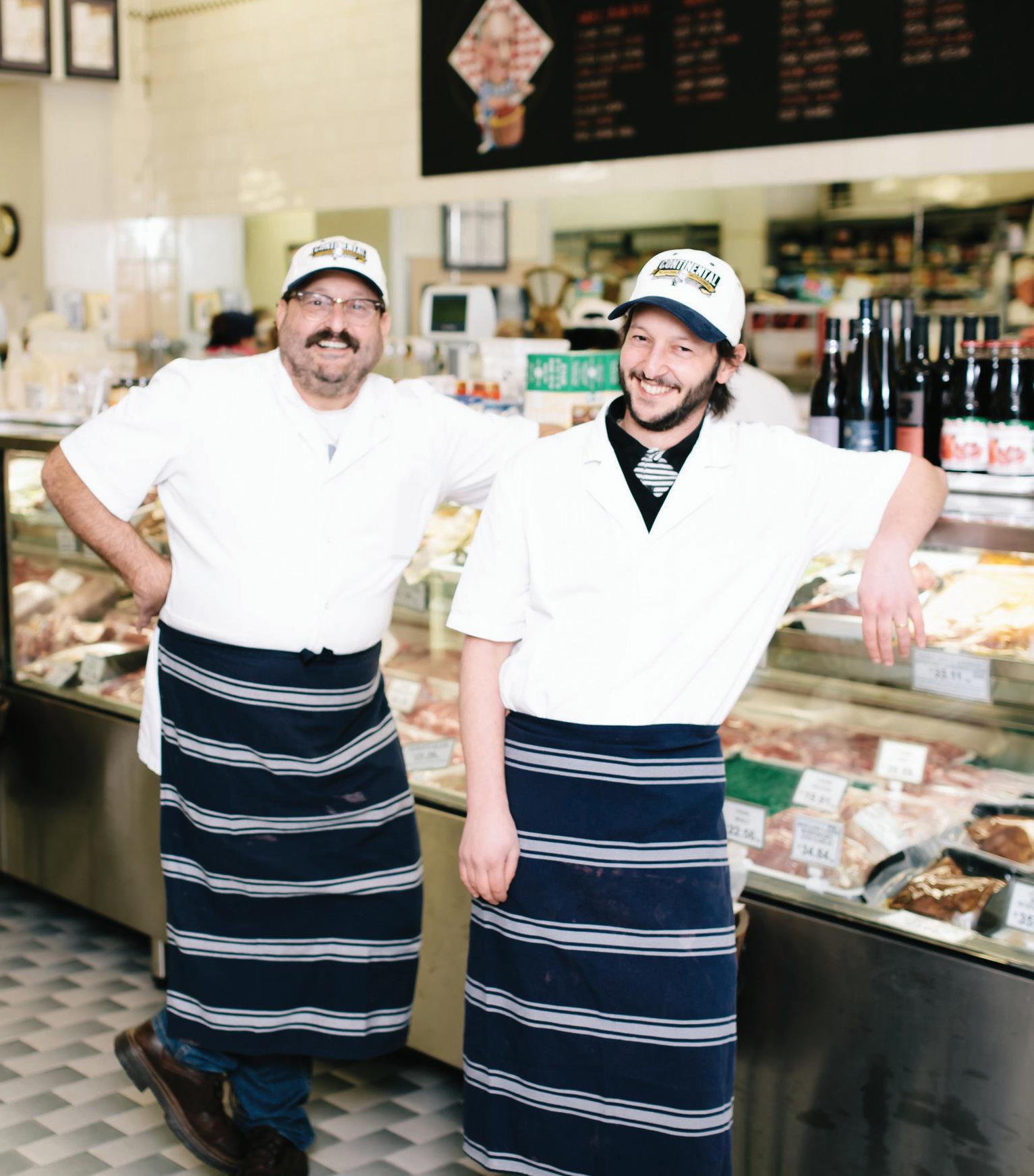
are dairy, along with the popular parve, vegan dark chocolate – are kosher.
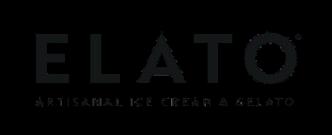
Premium Elato ice cream has extended its reach.
The delicious treat can now be found in the kosher freezer of major Woolworths outlets in Sydney, Canberra, and Melbourne.
It is also sold in close to 400 other supermarkets nationally including selected independent supermarkets and Woolworths’ Metro supermarkets.
Elato is also available for home delivery in Sydney, Melbourne, Canberra and Brisbane, via Metro60 and Uber Eats.
All three Elato flavours – triple vanilla and cold brew decaf café latte, both of which
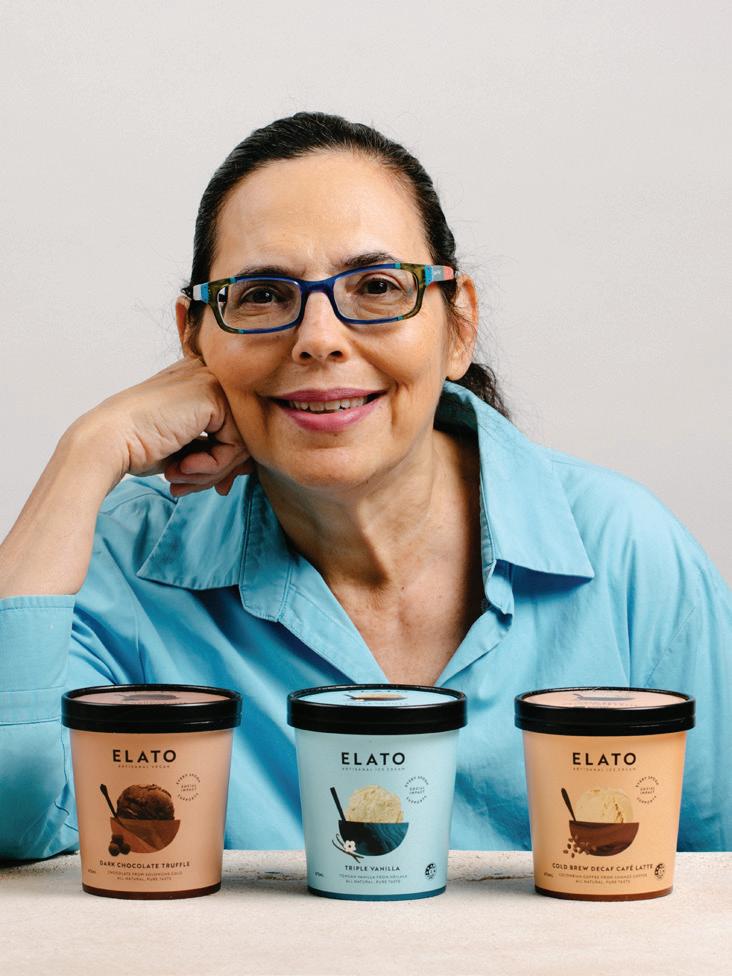
Elato’s coffee ice cream recently received the Queensland Dairy Industry award for 2022’s best ice cream and a gold award at the Sydney Royal Show.
The coffee and the vanilla flavours have also won dairy industry silver awards, while Elato won the “Best Socially Conscious Brand” at the inaugural Naturally Good Awards.
Elato champions natural, chemical free ingredients, along with added fibre and is free from major allergens, lactose, gluten, nuts and soy.
In addition to the strong, rich taste and smooth, creamy texture of all of three flavours, Elato’s dairy ice creams have 30 percent less added sugar.
That is a result of a patented process that enhances sweetness by removing lactose and improves texture, while achieving a three-star health rating.
Founder and CEO, Roz Kaldor-Aroni said the company is committed to being a sustainable brand and a force for good.
“We source delicious flavours from social enterprises that are committed to sustainability, fair trade and positive social impact.
“Fifty per cent of the brand’s profits are given away, to support food rescue nonprofit organisation Oz Harvest.”
Elato can now be found in the kosher freezers of the following Woolworths stores: Bondi Junction, Eastgardens and St Ives in Sydney, Belconnen in Canberra and East Hawthorn, Malvern, Bentleigh and Glen Huntly in Melbourne.
To find your local stockist or to contact Elato, go to www.elato.com.au
Last year I was elected president of the Jewish Christian Muslim Association (JCMA). Representing the three Abrahamic faiths in Victoria, the JCMA is an organisation dedicated to promoting religious tolerance and cultural understanding between Jews, Christians and Muslims.
Being part of this body, with diverse representatives from all segments of these three Abrahamic faiths, is a privilege. It is important that interfaith dialogue forums like this – where religious leaders can talk about their experiences and discuss what it means to be religious in Australia in the 21st century – exist.
Meeting with other faith leaders is enriching.
The JCMA allows us to learn about each other and foster relationships between strong multi-faith communities. The Abrahamic faiths have many similarities and by nurturing close working relationships with other leaders, I hope to increase tolerance and understanding among all Australians.
Bigotry and hatred often start from not properly understanding others. Since I joined the JCMA in 2019, my life has changed for the better. I have shared
common concerns and have hosted leaders in my home and synagogue. That has been replicated in their homes and sacred spaces.
I consider many of them my personal friends. Being a faith leader can sometimes be a solitary pursuit, but working with others to whom I can relate is comforting.
When we meet and speak, we break down barriers. I get to hear others’ thoughts and concerns. I learn from them and, I would hope, they learn from me.
I strongly believe that to combat hate, we must work collaboratively.
In a world that appears increasingly polarised by radicalism, the JCMA is a remaining bastion of dialogue, with space for all traditions and faith.
This is something that cannot and should not be taken for granted.
If we want to live in a tolerant and accepting society, we need to take the time to get to know others and appreciate their experiences.
In that way, we can fulfil G-d’s blessing to the patriarch of all religions, Abraham: I will make of you a great nation and I will bless you. I will make your name great and you shall be a blessing (Genesis 12:2).
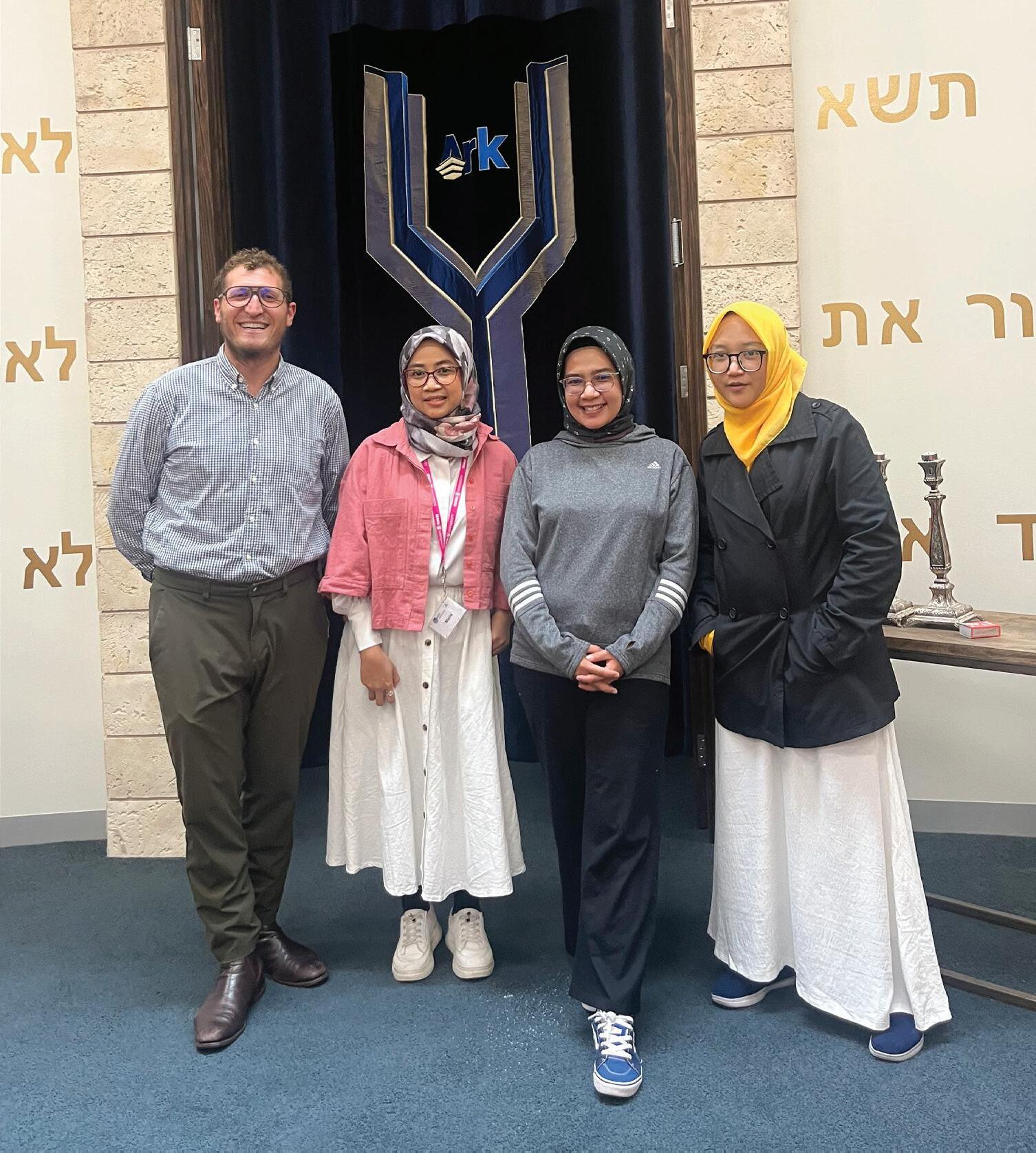
The kitchen sits at the heart of our homes and serves as a control centre to define what we eat.
So why should we think twice about what we cook and how does the concept of kashrut help?
Rabbi Akiva once challenged Turnus Rufus (Midrash Tanchuma, Parashat Tazria): “Whose actions are more beautiful, those of God or those of man?”
He replied, “those of man are more beautiful …”
Rabbi Akiva brought him raw wheat and cake and said, “this [wheat] is the work of God and this [cake] is the work of man.”
God, by definition, represents perfection and therefore traditional Greek wisdom would hold God’s result as superior to that of man.
But Judaism believes that humanity is summoned to finish what God started.
Sometimes we are handed lemons with which we need to make lemonade and at other times we are provided with the raw ingredients with which to “cook up a storm”.
Our own bodies represent the same idea – a gift from God that we must look after through healthy nourishment and exercise (spiritual and physical).
So, when you are preparing or enjoying the delicious meal at the end of your cooking adventure, consider what you use and remember that in life we need to utilise every ingredient to make a difference.
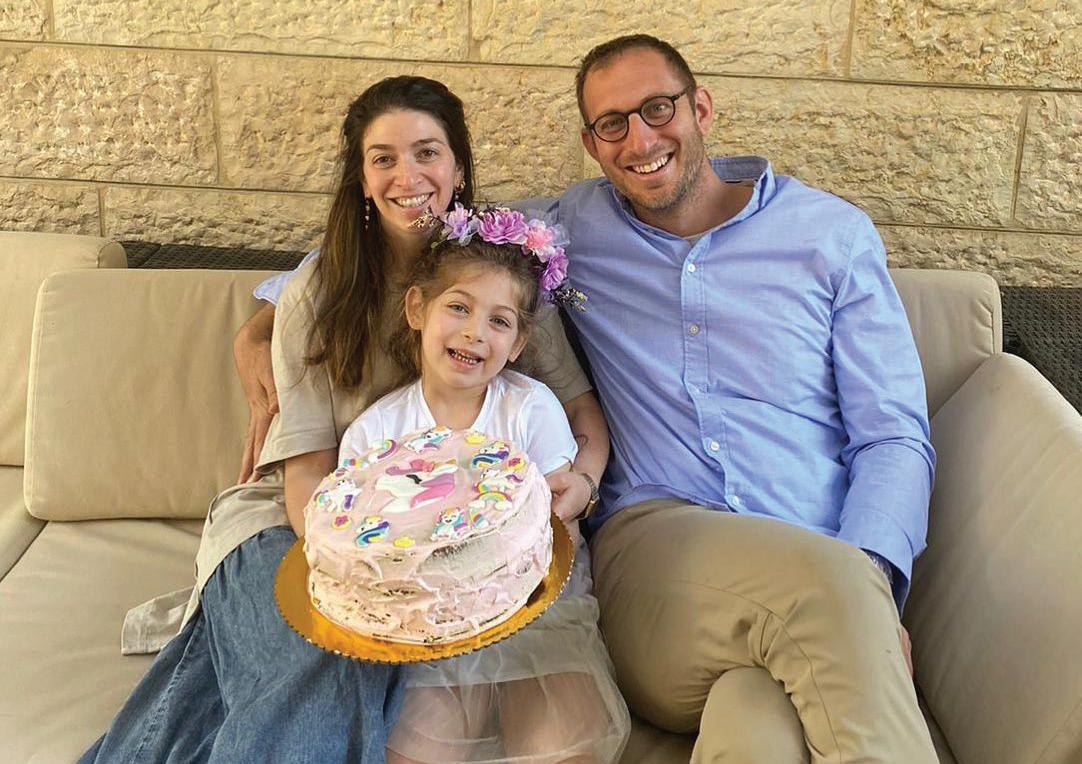
What a phenomenal day The King David School had celebrating Yom HaAtzmaut.
From being welcomed into the shuk by its hanhagah (school leaders) at the Magid campus as students arrived at school, to watching the flag parade and hearing from “Ben Gurion” at its Dandenong Road campus, the day began with huge ruach (spirit).
After a tekes (ceremony) at each campus, students were involved in a fun-filled day of activities.
That included decorating their own hamsas, making flag biscuits, playing life-size Israel monopoly, “boarding” an El Al flight, recreating the Shuk Machane Yehuda, krav maga, an Israel-themed amazing race, a hummus making competition, a lunch time carnival and Israeli dancing.
The day finished with staff and students forming the number “75” and singing Yom Huledet Sameach (Happy Birthday).

How to believe in heaven when it hurts like hell.
Rabbi Harold Kushner, the author of the 1981 bestseller “When Bad Things Happen to Good People”, has died at 88. Kushner wrote this book – still talked about today –after his son tragically passed away at age 14 from progeria, a disease that causes premature aging. The pain of this loss prompted the rabbi to write this book as a consoling aid to others also struggling through unexpected and devastating loss.
Kushner’s thesis was that bad things happen to good people simply because God didn’t have control over all the evil in this world. He wrote, "God does not, and cannot, intervene in human affairs to avert tragedy and suffering. At most, He offers us His divine comfort and expresses His divine anger when horrible things happen to people. God, in the face of tragedy, is impotent. The most God can do is to stand on the side of the victim, not the executioner." Kushner also asserted that “the purpose of religion is that it should make us feel good about ourselves,” and if it doesn’t, it has failed in its mission.
I walk a fine line here because as a rabbi who has been in the “consolation business” for over a half a century, the last thing I would ever do is discount the feelings of anyone who endured the tragedy that Kushner and his wife did. However, despite his own theological training and good intentions, the rabbi’s response to this existential question about how to deal with suffering and evil is not a Jewish, or even a religious, response. Nor is it psychologically satisfying.
Like Rabbi Kushner, I have also experienced tremendous tragedy in my life. When I was 38 years old, my 36-yearold wife passed away suddenly and unexpectedly, leaving me a widower with many children to raise on my own. Along with being a married couple and parents of 11 children, my wife and I were also partners in teaching and directing our local Jewish day school. With Rochel Leah’s passing, our community lost a teacher, a mentor and a guiding light. I also lost my rock and my partner in love and life.
In my pain, I began to dig deeper for Judaism’s answers to the existence of evil and tragedy and how we are meant to view it. I learned that we are not the centre of the universe – God is. If there is a God, the central mission of humankind is to find Him, to get to know Him and to serve Him. The word God evokes in some a sense of exaltedness, etherealness and distance. This needs to change. The wisdom and disciplines of Judaism make God relatable, enabling us to expand our sense of self through diminishing our ego and creating a personal, dynamic relationship with God. This lifelong exploratory journey is the destination, one that can be fulfilling and even exciting.
We all want to feel good about ourselves. Healthy self-regard is important. But feeling good about ourselves is not the purpose of religion. It is a by-product of a life lived purposefully, with God as one’s ballast and compass. Each of us will be bruised by life’s bitter challenges at one time or another.
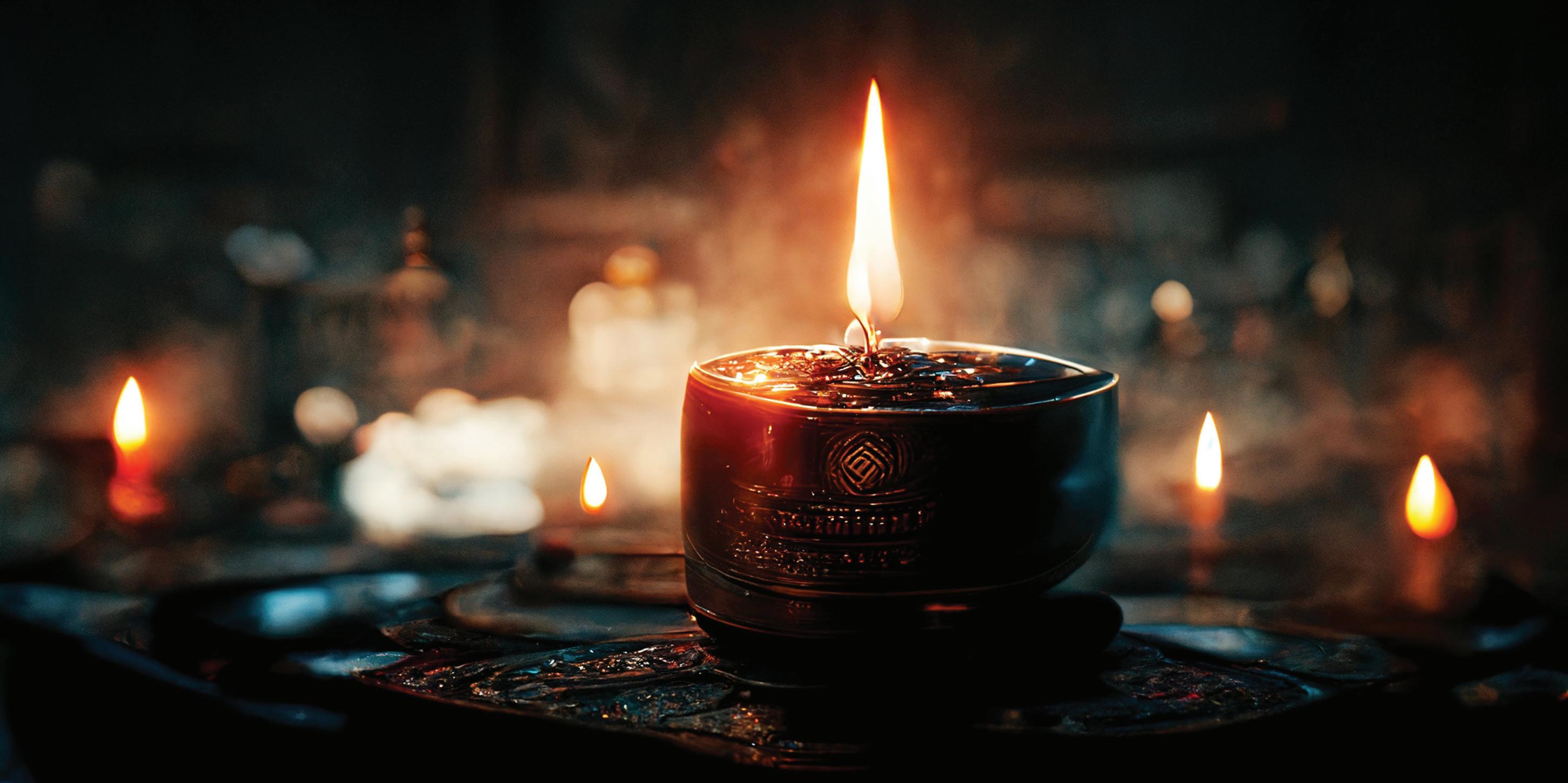
God wants to be at our side, helping to steer us through life’s traumas and storms without keeling. But if we are the centre of our universe and believe that stopping evil and heartbreak is above God’s pay grade, then a life well-lived means nothing more than that the one who ends up with the most toys wins.
Kushner once acknowledged that understanding tragedy boils down to only two possibilities: God’s will or bad luck. In Kushner’s view, it was bad luck. God doesn’t run the world, leaving us all vulnerable to chance, nihilism or fate. A neutered God could only offer comfort during moments of crisis. But this approach makes human suffering meaningless and purposeless, with human beings as hapless victims. Judaism believes that life has meaning. Therefore, human suffering must also have meaning.
The trauma of tragedy can understandably cause one to become myopic in their pain. They can feel that nobody else can understand or help – not even God. This closes the door on God, telling Him, "Don't mix into my pain; You can't help me anyway!"
As I found in my own experience and through counselling and consoling hundreds of others, I know that our greatest possible comfort and way forward through grief is to submit to the Master of the Universe and let Him in. When I made my relationship with God a more personal one, I was no longer relating to the “To whom it may concern God”, but to the God who knows me and cares for me; I’m no longer alone in my travail.
Struggling with God and trusting in God are not mutually exclusive. In fact, they can be complementary. The very name of the Jewish people is Israel, which means to struggle with God.
Abraham and Moses challenged God’s tough justice and their ongoing difficult life tests. King David did the same through the Psalms. Crying out to God, challenging God and demanding His help are signs of a secure relationship that can handle the friction.
If a person can cry out to God about their enormous problems, a person can also tell their problems how great God
is. We may be incapable of embracing Him in all His greatness, but that doesn’t stop Him from embracing us. We can grant Him authorship of what we are going through and recognise that there is ultimate meaning and purpose in our pain. We are not victims of chance.
As King David wrote in Psalms 91:14, “I
– God – am with him – the sufferer – in his distress.” In this way, we can lean on God to give us strength to find purpose and meaning in this dismal chapter and the resilience to endure what we have been dealt, confident that ultimately we can carry on with purpose and even optimism.
The Victorian Association of Jewish Ex & Servicemen & Women (VAJEX) Australia commemorated the 108th anniversary of the Gallipoli landings on 30th April with a service at Caulfield RSL. It was attended by more than 120 people. That included rabbis, federal and state members of parliament,
councillors from Glen Eira and Port Phillip and VAJEX’s patron in chief. A navy bugler sounded Reveille. The last post rang out and the national anthem was played.
VAJEX president Martin Bude acknowledged the service of three WWII veterans – all aged 100 or more –who were present and spoke of the loss of Private Greg Sher, who was killed in action in 2009.
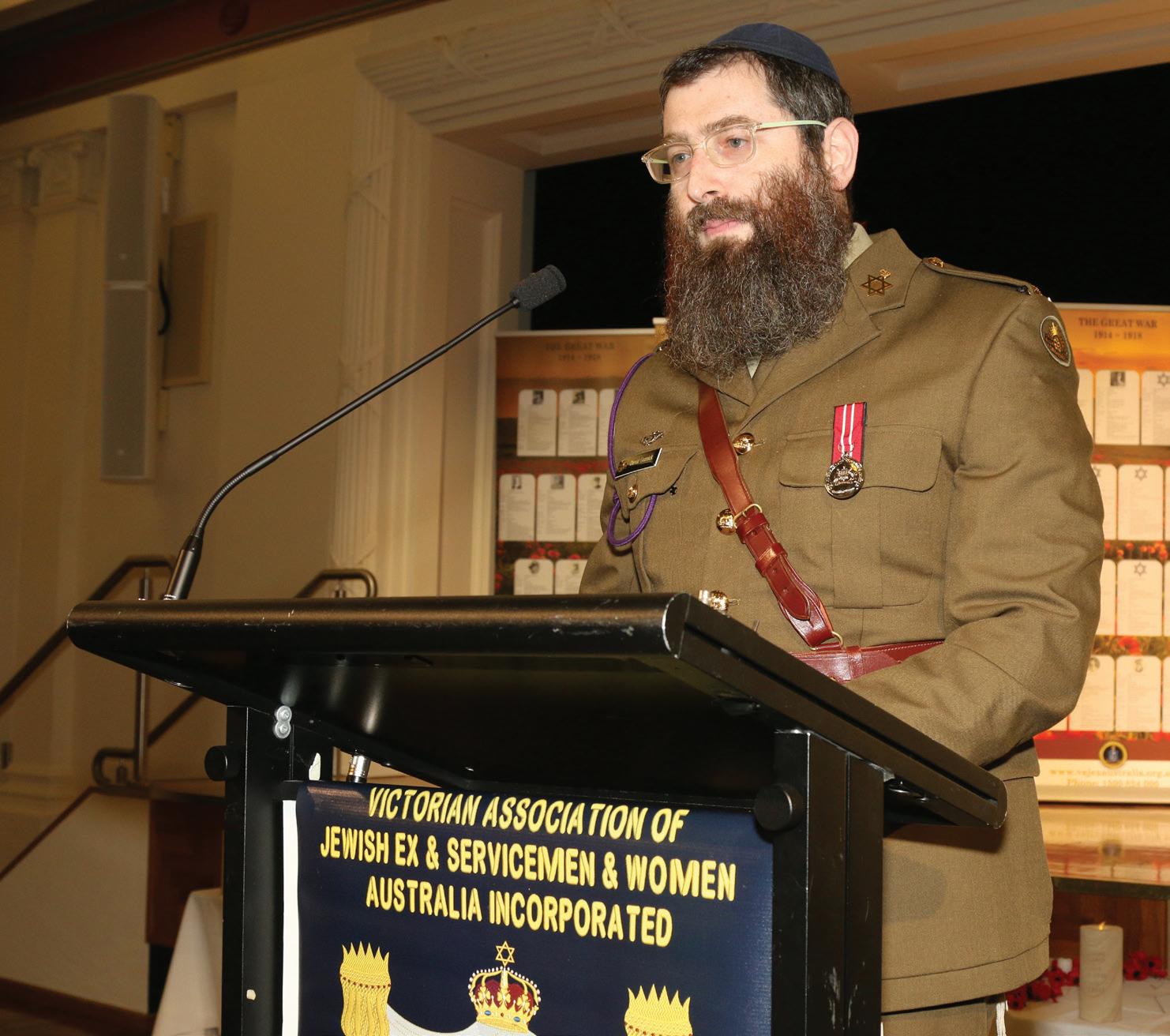
Caulfield Shule recently welcomed Mois Navon, the visionary founding engineer of MobileEye in Israel, as the scholar in residence for Yom Ha’atzmaut. I spent time with the esteemed philosopher and educator, and was struck by his unique and insightful perspective on the future of education and engagement. Our conversations ranged from the practical implications of autonomous vehicles to the profound ethical implications of robots. I was especially interested in hearing his thoughts on the importance of critical thinking in our rapidly changing world.
Mois shared with me his recent article titled "Save the Essay: A Eulogy", in which he laments the decline of the art of essay writing due to the rise of AI technology, such as ChatGPT. He argues that the traditional essay format, with its clear thesis, supporting evidence and conclusion, is a fundamental tool for developing critical thinking skills and engaging with complex ideas. As someone who deeply values the importance of critical thinking and engagement, I found Mois' argument compelling and thoughtprovoking. It sparked a deep reflection on the future of education and the broader challenges facing us in the context of our fast-paced, digital age.
It is all too easy to prioritise quick, surfacelevel interactions over deep, thoughtful engagement. However, if we want to inspire the next generation to become thoughtful, engaged citizens and leaders, we must prioritise education that cultivates critical thinking, empathy and intellectual curiosity.
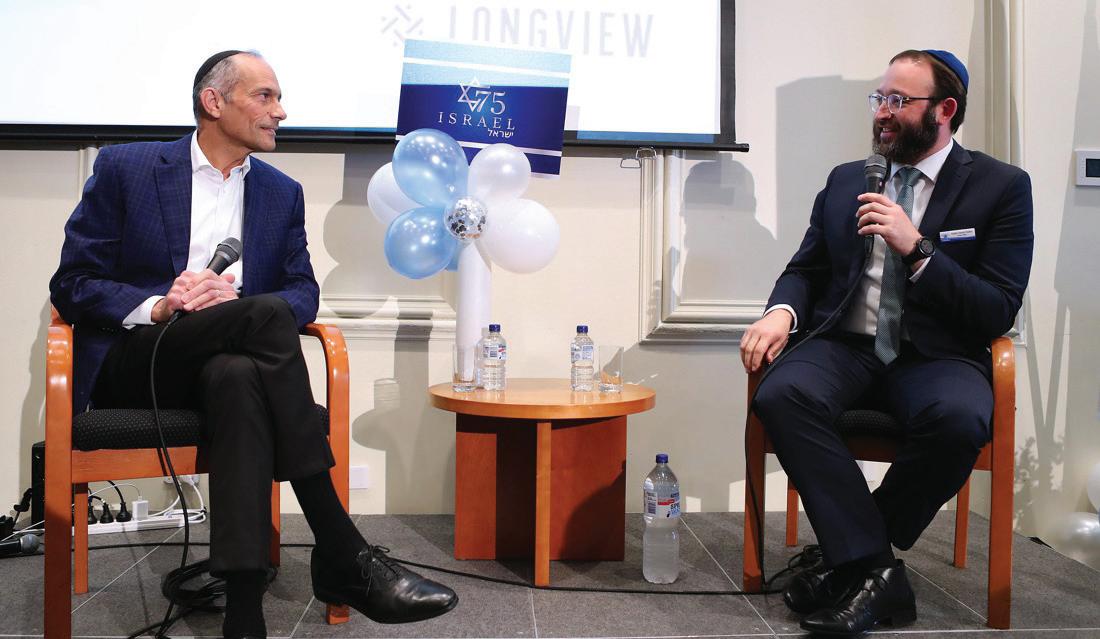
Drawing from Jewish sources and texts, we can see that the Sages deeply valued the importance of dialogue and conversation in the pursuit of knowledge and truth. The Talmud, the central text of Jewish law and ethics, is structured as a conversation between rabbis from different regions and generations, emphasising the value of respectful debate and discourse in the pursuit of understanding. While modern tools such as artificial intelligence can enhance critical thinking and promote engagement with complex ideas, they must be balanced with human interaction. We must create spaces where students can engage in dialogue and discussion with one another and with their teachers, fostering a culture of intellectual curiosity and empathy. Furthermore, we

must recognise the continued importance of essay writing as a valuable skill for students. While technology has created new avenues for communication and engagement, the traditional essay format provides students with an opportunity to develop their critical thinking skills and engage with complex ideas in a structured and focused way. Through this format students can learn how to organise their thoughts and arguments and develop their ability to communicate their ideas clearly and effectively.
As educators, we must also recognise the vital importance of teaching empathy and emotional intelligence. It is essential for the next generation to understand and appreciate diverse perspectives and experiences and to learn how to engage with
others respectfully and with an open mind. This includes understanding and managing one's own emotions and developing the ability to empathise with others.
Additionally, we must encourage creativity and innovation in our students. The ability to think outside the box and come up with novel solutions to complex problems is a valuable skill. We must teach students how to be creative and innovative thinkers while also teaching them how to approach problems systematically and with a critical eye. As mentioned, the Talmud is noteworthy for promoting this type of problem-solving thinking.
Finally, we must promote the idea of lifelong learning. In our rapidly changing world, it is essential for individuals to be able to adapt to new technologies and changing circumstances. This means developing a passion for learning and an appreciation for the value of education that lasts beyond formal schooling. As Jews, we have and need to continue being the “People of the Book”, people who value education and learning. We cannot deny the rapid advancement of technology and we should use it to better society. However, by drawing from traditional methods and Jewish sources and texts, while also utilising modern tools and technology, we can help prepare the next generation to succeed in an ever-changing world. By prioritising critical thinking, dialogue, empathy, creativity and lifelong learning, we can inspire the next generation to become thoughtful, engaged citizens and leaders who can meet the challenges of our time with insight and grace. Together, we can build a brighter future for ourselves, our communities and our world.
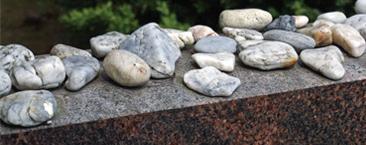


1. Because it occurs 50 Days after Pesach
2. Exodus and Deuteronomy
3. b) Wheat. Shavuot is known as Chag Hakatzir - The festival of the Wheat Harvest
4. Mountain of Moses
5. False – Mt Sinai is 2,285-metre (7,497 feet) high. It is surrounded on all sides by higher peaks in the mountain range of which it is a part. For example, it lies next to Mount Catherine which at 2,629m or 8,625ft, is the highest peak in Egypt
6. Judaism. The summit has a mosque that is still used by Muslims, and a Greek Orthodox chapel, constructed in 1934 on the ruins of a 16th century church, that is not open to the public
7. The Burning Bush
8. Nehemiah (9:13)
9. Mel Brooks
10. At the time of its release, it was the most expensive movie ever made
11. Chukkat Hagoy(im) is the prohibition of copying the ways of non-Jewish people.
The Vilna Gaon opposed decorating synagogues with plants and shrubs etc. because of the long-standing tradition among non-Jews to decorate their houses of worship in a similar manner
12. The Song of Songs (Shir Hashirim) 4:11
13. Rose water – according to tradition the experience originally had the effect of the souls of the Israelites leaving their bodies through sheer excitement – the rose water symbolises the dew with which God will
eventually revive the dead. (TB Shabbat 88b)
14. David – King David, the great grandson of Ruth, was born and died on Shavuot
15. During the time of the Judges (following the time of Joshua, before the birth of Samuel & the advent of the monarchy in ancient Israel)
16. St Catherine’s Monastery at the foot of Mt Sinai
17. 1952
18. Naomi, her husband and sons left Judah for Moab due to a famine. Naomi returned after the famine eased and following the death of her husband and sons
19. Gleaning, i.e. gathering leftover grain after a harvest
20. c) Samuel is said to have written the Book of Judges, the Book of Ruth and the book which bears his own name, Samuel
21. Israel ben Eliezer (1698 – 1760)
22. We will do (observe the commandments) and we will listen (we will study the commandments)
23. The Zohar
24. Machzor comes from the Hebrew verb
Lachzor which means to go around - the Hebrew word for revision – going over one’s notes before an examination is Chazarahhence the word Machzor refers to a book of prayers which covers the cycle of the Jewish year
25. The Crusades
Jewish answer – SHTIKEL. Here is a list of some common words (“yes”, we know there are more words in the dictionary that can work, but these words are common to today’s vernacular) – HIKES, KETTLE, KETTLES, KILLS, KILTS, KISHKE, KISHKES, KISSES, KITES,
KITTIES, LEEKS, LIKELIEST, LIKES, SEEKS, SHEKEL, SHEKELS, SHEIKH, SHEIKHS, SILKIEST, SKIES, SKILL, SKILLET, SKILLETS, SKILLS, SKITS, SKITTISH, SLEEK and SLEEKEST.
Questions/comments – email Yoni at koshercroswords@gmail.com










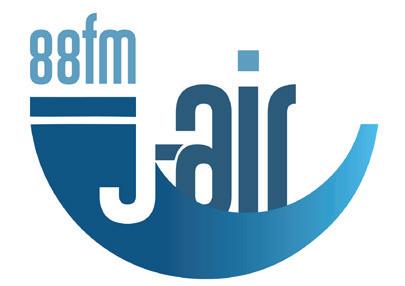












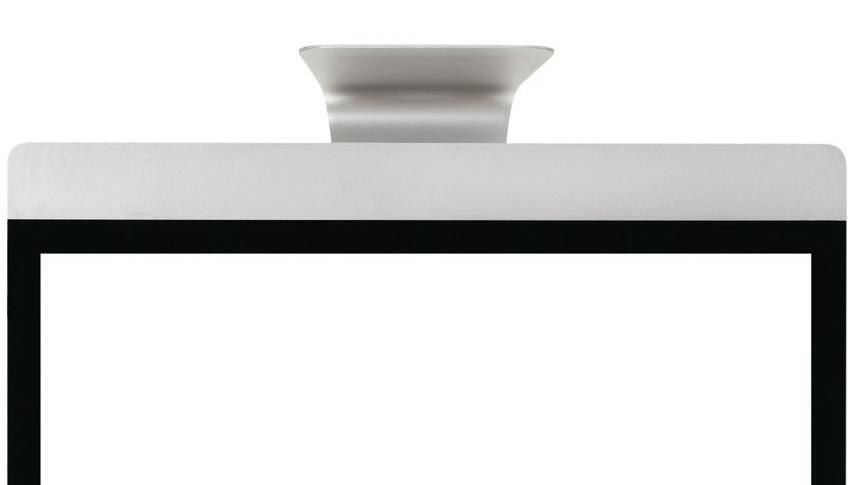
On 13th November, 2015 a series of coordinated terrorist attacks took place in Paris and the city’s northern suburb, Saint-Denis. 130 people were killed and 416 injured.
France was already on high alert after two gunmen attacked the headquarters of the satirical newspaper Charlie Hebdo on 7th January that year. That resulted in 12 deaths and 11 wounded.
November is the tension filled story of the five days that followed the 13th November attacks and the anti-terrorist police’s attempt to track down those involved.
Suffice to say, nerves were frayed. Time was of the essence because those questioned made it clear this was only the start of a bloody campaign by ISIS.
The film focuses on the lead investigators of the French anti-terrorism services.
All the characters' names, except those of the terrorists, are fictitious.
Among them is Heloise (Sandrine Kiberlain), under pressure from the Minister’s office and her chief commander Fred (Jean Dujardin), intense and driven.
So, too, a captain – Ines Moreau (Anais Demoustier) – who steps outside the rules of protocol and then has a lot of making up to do.
Another figure of note is a civilian informant Samia (Lyna Khoudri), who risks her life for the greater good, but
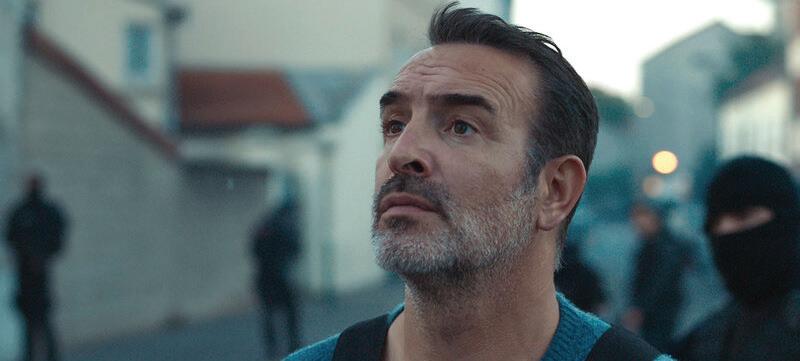
that comes at considerable cost. November has been co-written (with Olivier Demangel) and is directed by Cedric Jimenez.
It provides insight into the desperation, determination and dedication that surrounded the days following the attacks.
The angst and tension are palpable throughout and the performances and cinematography are strong.
There are so many leads to chase up. Many, of course, turn out to be red herrings.
The more time that elapses, the more the weight of expectation builds. The frustration and the toll that takes on people on the ground is evident.
But this is a large jigsaw puzzle, with global tentacles.
Jean Dujardin is an authoritative and compelling commander that demands total commitment.
As the captain, Anais Demoustier works on gut instinct and feels deeply.
Lyna Khoudri plays a pivotal role as a good Samaritan who you can’t help but empathise with. What also stands out is
BOOK CLUB: THE NEXT CHAPTER (M)
BY ALEX FIRSTBook Club: The Next Chapter is a feelgood sequel to the 2018 film Book Club. It concerns the ongoing fate of the four women at the centre of the original as they undertake a special girls’ trip.
Vivian (Jane Fonda), perpetually single, has just been asked for her hand in marriage by her long-term, suave boyfriend Arthur (Don Johnson).
But before the nuptials, Carol (Mary Steenburgen) puts it to the others that they should make good on a promise made decades earlier to travel to Italy.
Mind you, she is worried about her husband Bruce (Craig T. Nelson), who has just had bypass surgery.
Former judge Sharon (Candice Bergen) isn’t too keen because she has an ageing cat to care for, but soon that is a non-issue.
And for Diane (Diane Keaton), who is in a loving relationship with Mitchell (Andy Garcia), she still hasn’t disposed of her dead husband’s ashes.
During the ensuing bachelorette holiday, the four have a series of adventures.
They encounter an Italian policeman (Giancarlo Giannini), a smooth-talking, retired professor (Hugh Ousmane) and a chef (Vincent Riotta), Carol’s old flame.
Like the first chapter, Book Club 2 is written by Bill Holderman and Erin Simms,

with direction by the former. The film starts with promise. Some of the interactions between the women while they are on Zoom during COVID lockdown are genuinely laugh aloud funny.
Then, the picture hits a roadblock, as time is wasted getting them to agree to holiday together, which was always going to happen, from the moment it
was mentioned. Thereafter, for much of the remaining movie, virtually everything is signposted.
Stolen luggage … tick. Romantic encounters … tick. Stunning landscapes and landmarks (and, I assure you, they really are stunning) … tick. And so on.
The whole thing is manufactured and predictable.
the fine attention to detail captured by cinematographer Nicolas Loir.
The production values are strong throughout, but given the nature of the plot November requires concentration to follow all the threads.
I felt quite wrung out by the end of the film, which – I dare say – was exactly what the filmmakers were seeking.
Rated M, November scores an 8 out of 10.
Where are the unexpected plot twists … the genuine surprises?
Sure, the narrative comes from the apparently never-ending bank of sanguine material, but it seems like such a waste of top-notch talent.
These are some of the finest actors of a generation, often delivering a succession of corny and, at times, sexually charged one liners.
It almost appears as if aside from a cadre of British actors, women get to 60, 70 and beyond and the industry all but abandons them. They are left to deal with scripts that would feel more at home in a B-grade telemovie. Why?
Surely there is an audience for intelligent, engaging, entertaining, thought-provoking cinema involving our third generation of females.
And “no”, that doesn’t rule out comedy or romance.
Firmly in “chick flick” territory (which, I should quickly add, I often warm to), the problem is when the humour falls flat – as it often does – what results is little more than cringeworthy.
To be fair, I feared that before seeing the movie, so I suppose you could say I wasn’t disappointed.
Book Club: The Next Chapter is a very nice-looking film with little substance that some are likely to appreciate.
Rated M, it scores a 5½ out of 10.
